WILD COLORS OF THE SUNNY AFTERNOON
The 29th of April this year was a warm and sunny day, the weather was very typical for the season. I spent the whole afternoon in Palera, the coastal, agriculture-oriented area about five or six kilometers from my hometown, busy photographing plants and small animals that are very active and abundant in spring.
After a month of photography near sunset and at dusk, the same place looked a bit like a different world, brightly lit by the midday sun. The colors, the atmosphere - almost everything I regularly observed at the end of the day was quite different now.
I also saw a few species I haven't encountered during my evening photo sessions. In the above picture, you can see one of them. It's a bug from the Coreidae family. The scientific name of the species is Syromastus rhombeus.
Here you can see an up-close portrait of the Raphanus raphanistrum flowers. The photograph was taken through the macro lens. The next shot ...
... shows the entire plant. And it shows a bit of the green scenery too.
These hairy beetles were mating on the flowers. After taking the above photograph ...
... I noticed the colorful Carpocoris purpureipennis bug on the neighboring flowers of the same plant.
When I turned my focus back to the beetles ...
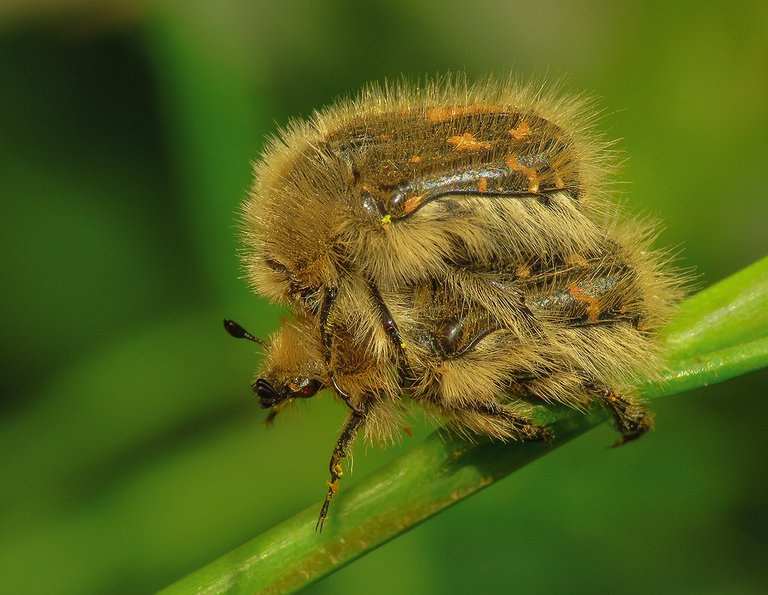
... they were on the way to another cluster of flowers belonging to the same Raphanus raphanistrum plant.
These beetles belong to the Scarabaeidae family. The scientific name of the species is Tropinota squalida.
Carpocoris purpureipennis is a shield bug, which means that it belongs to the Pentatomidae family.
When the pair of furry beetles that look a bit like an insect version of a teddy bear finally reached the flowers ...
... the female started feeding on nectar. Or on pollen. Or both. There are three subspecies of Tropinota squalida. In this post, you can see the Tropinota squalida pilosa, the hairiest of them all.
The beautiful flower shown in this and the following photograph is very small.
It belongs to Lysimachia arvensis, a gracile plant that grows under the much taller neighbors like Raphanus raphanistrum, introduced a bit earlier in the post.
In the evening, Lysimachia arvensis flowers fold their petals around the centers like shops that don't allow visitors when the working hours are over.
Geranium dissectum is another tiny flower that contributed a lovely color to this sunny post that has an ambition to be one of the most colorful ones I've published this year. In the following photograph ...
... I came a bit closer to the flower, and, due to the angle from which the shot was taken, the background is different. A small difference for sure, but small differences mean a lot in photography.
Here you can see another flower of the same kind, shown in two shots. One was taken with the flash, the other without it.
This is the third Geranium dissectum flower I prepared for you today ...
... and is the last one.
The lovely red insect with interesting black markings, shown in this and the following photograph ...
... is the Corizus hyoscyami, a bug from the Rhopalidae family. In the first of these two shots, the bug is just resting on the leaf of the Geranium dissectum, while in the second, you can see it feeding on the tiny fruits of the same plant.
This iridescent beetle ...
... was resting on the ear of grass. In the following photograph ...

... the same beetle is caught in a slightly different pose. The name of the species is Psilothrix viridicoerulea. It belongs to the Melyridae family.
A bit later and about ten meters further, on another ear of the same kind of grass ...
... the Psilothrix viridicoerulea beetles were mating.
The grass in question is Hordeum murinum, commonly known as the wall barley or false barley.
All the photographs showing the Psilothrix viridicoerulea beetles I presented so far were taken with the flash of my camera on.
Here you can see a shot that shows the scene in natural light of the early afternoon. The Psilothrix viridicoerulea in the following picture ...
... was photographed with the flash in a different environment, in the vivid red ambiance ...
... inside the poppy flower.
The scientific name of this plant, commonly known as the Common poppy, is Papaver rhoeas.
I photographed quite a few common poppies that afternoon.
When I took this shot, the Psilothrix viridicoerulea was feeding on pollen right under the anthers, which partially blocked the light of the flash. That's why the thorax appears to be black.
Here I came a bit closer to the beetle. The center of the poppy flower, shaded and sheltered by the big petals, is pretty dark even in the middle of a sunny day. You can't take a decent macro without a flash in that environment.
This is a portrait of the Sonchus oleraceus plant with withered flowers that will soon fall off and be replaced by the seeds. In the following photograph, taken through the macro lens ...
... you can see the aphids that were feeding on the stem.
This is Uroleucon sonchi, commonly known as the large sowthistle aphid, a species that can be found on sowthistles, mainly on the common sowthistle (Sonchus oleraceus) and prickly sowthistle (Sonchus asper).
The foreground of this wide shot shows a Sonchus oleraceus plant that has produced the fluffy seed heads.
Here I zoomed in on one of those lovely seed heads.
Here you can see the Dolycoris baccarum, a bug from the Pentatomidae family, feeding on the Geranium dissectum plant. In the following photograph ...
... a Psilothrix viridicoerulea beetle is posing on the long leaf of grass.
Here you can see the same scene photographed with the flash. In some cases, it ain't easy to tell if the flash helps or not. Both shots are Ok. They are different, that's all I can say.
Here I came a bit closer to the insect ...
... and I did it with and without the flash, again. In the following photograph ...
... you can take another look at the scenery embellished by the poppies in the foreground. The plumpy white clouds were present only low along the eastern stretch of the horizon.

The sky right above my head was deep, blue, and almost completely clear.
At some point, the showy red petals of the common poppy fall, and the fruit, filled with a multitude of tiny seeds, stands on the stem like an interesting little sculpture that represents a stylized human head, or some kind of house built on a pole.
The fruit shown in the above photograph is still surrounded by decaying anthers that won't be there for much longer.
Here you can see another fruit, and the nymph of the great green bush cricket (Tettigonia viridissima) that was resting on its top when the shot was taken.
In the following photograph ...
... another young Tettigonia viridissima is resting on the outer surface of a petal.
This nymph of the same kind has found a good place near the center of the flower.
Here you can see another group of common poppy flower buds and flowers I photographed that afternoon.
At some point, while rambling across the field, I came across a pretty big Papaver rhoeas plant isolated from other poppies, with only one open flower on it.
This is a different kind of poppy.
Its scientific name is Papaver apulum. In this photograph, a Psilothrix viridicoerulea beetle is feeding on the pollen in the center of the flower, while in the following one ...
... the same insect is posing on the petal.
The plant is commonly known as the peacock poppy.
Papaver apulum isn't as numerous here in Palera as Papaver rhoeas.
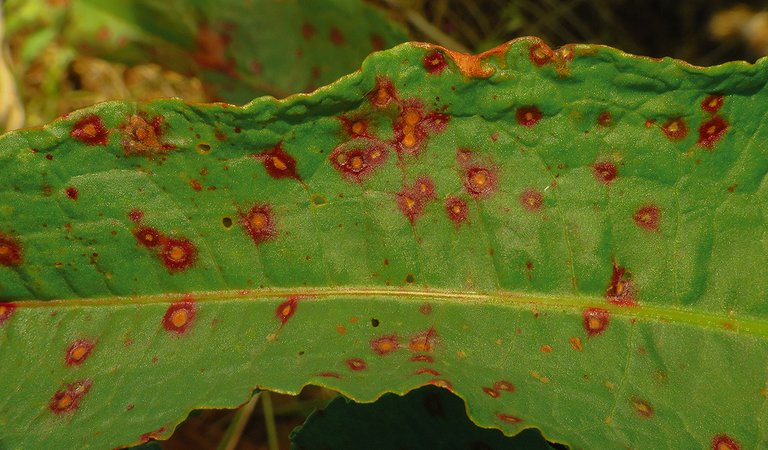
Here you can see a big, juicy leaf nicely decorated with a plant pathogen that forms lovely red dots. The leaf belongs to the Rumex crispus, a plant commonly known as the curly dock.
In the following photograph ...
... you can see the entire plant in all its meter and a half tall glory.
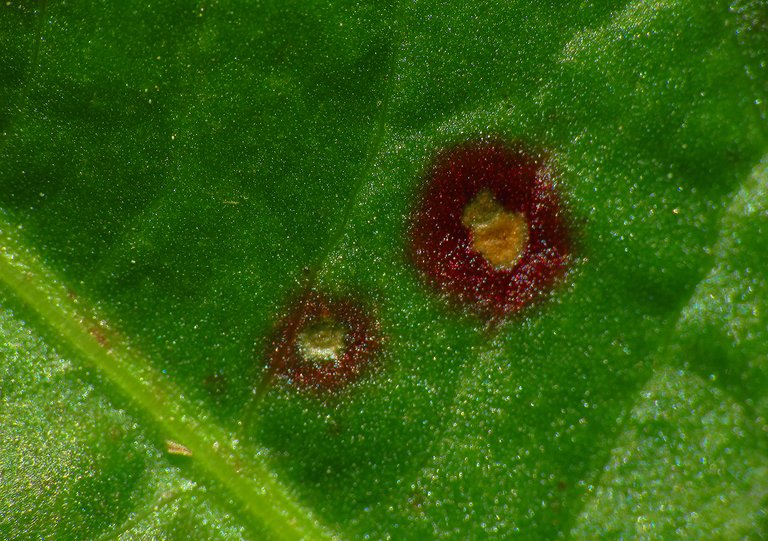
The name of the pathogen, which is a species of fungus, is Ramularia rubella. The red color is caused by the production of a toxin called rubellin.
In this shot, I zoomed in on the top of the plant filled with a multitude of tiny fruits.
On the ground, near the base of the same curly dock, a colorful lizard was sunbathing and observing my every move. The scientific name of the species is Podarcis siculus. During the mating season, the males get a bright-orange belly that makes them look more showy than usual.
Here you can see the yellow flowers of the Medicago polymorpha, a species of clover.
This wide shot shows the clover from a different angle.
The Medicago polymorpha flowers are very small. I used the macro lens to get this very close-up portrait.
In this, more or less uniformly green shot, you can see an area dominated by Anthemis arvensis, a plant that wasn't in those days at the end of April. On one of those Anthemis arvensis plants shown in the foreground ...

... I photographed a well-camouflaged tortoise beetle. This is Cassida rubiginosa, a species from the genus Cassida of the rich and varied Chrysomelidae family.
This lovely flower ...
... belongs to the high mallow.
The scientific name of the plant is Malva sylvestris.
This plant can be found in my yard as well, but here in Palera, surrounded by a greater biodiversity, it looks much better.
This is the last mallow-themed photograph I prepared for today.
Here you can take a look at the blue layers of the distant landscape.
This is the peacock poppy again. The photograph shows the center of a Papaver apulum flower. Before getting the following shot ...
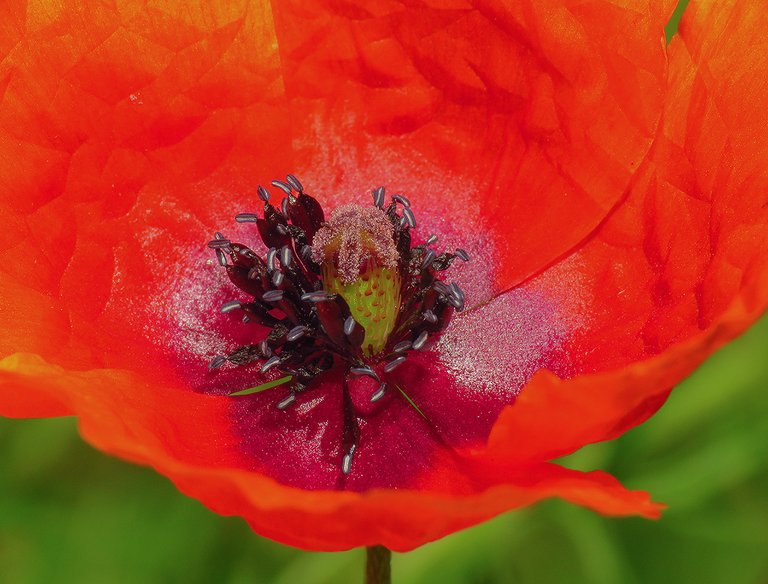
... I removed some anthers to show you the fruit which is developing in the middle. On another flower of the same kind ...
... I found this beetle from the Scarabaeidae family.
The scientific name of the species is Oxythyrea funesta.
This picture shows a Psilothrix viridicoerulea feeding on pollen.
Both beetles were photographed on the same Papaver apulum flower.
This spider from the Cheiracanthiidae family ...
... was resting on the nearby clover.
The scientific name of the species is Cheiracanthium erraticum. I mean, the scientific name of the spider, not the clover.
This is a macro portrait of the Erigeron bonariensis flower.
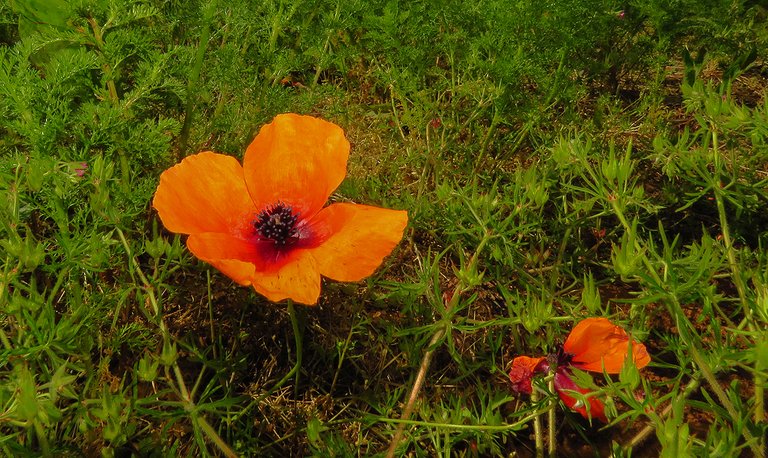
Here you can see yet another peacock poppy.
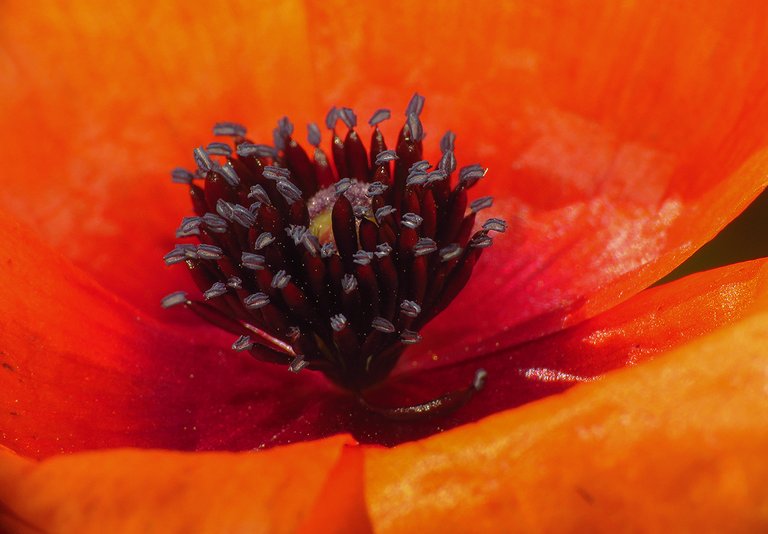
This is the center of the same flower. The photograph was taken through the macro lens. The following wide shot ...
... in addition to the Papaver apulum flower, also shows a bit of the scenery.

AS ALWAYS HERE ON HIVE, THE PHOTOGRAPHS ARE MY WORK.
The following links will take you to the sites with more information about the protagonists of today's post. I found some stuff about them there.
https://www.britishbugs.org.uk/heteroptera/Coreidae/syromastus_rhombeus.html
https://en.wikipedia.org/wiki/Raphanus_raphanistrum
https://www.britishbugs.org.uk/heteroptera/Pentatomidae/carpocoris_purpuripennis.html
https://www.inaturalist.org/taxa/71093-Tropinota-squalida
https://en.wikipedia.org/wiki/Lysimachia_arvensis
https://en.wikipedia.org/wiki/Geranium_dissectum
https://en.wikipedia.org/wiki/Corizus_hyoscyami
https://www.inaturalist.org/taxa/470237-Psilothrix-viridicoerulea
https://en.wikipedia.org/wiki/Papaver_rhoeas
https://www.naturespot.org/species/smooth-sow-thistle
https://www.naturespot.org/species/uroleucon-sonchi
https://en.wikipedia.org/wiki/Dolycoris_baccarum
https://www.inaturalist.org/taxa/133250-Tettigonia-viridissima
https://europlusmed.org/cdm_dataportal/taxon/ef93c735-a3a9-43e7-8f97-52c22f16662f
https://www.infoflora.ch/en/flora/papaver-apulum.html
https://en.wikipedia.org/wiki/Rumex_crispus
https://www.naturespot.org/species/ramularia-rubella
https://www.inaturalist.org/taxa/337045-Podarcis-siculus
https://en.wikipedia.org/wiki/Medicago_polymorpha
https://en.wikipedia.org/wiki/Thistle_tortoise_beetle
https://en.wikipedia.org/wiki/Malva_sylvestris
https://www.inaturalist.org/taxa/68328-Oxythyrea-funesta
https://www.naturespot.org/species/cheiracanthium-erraticum
https://en.wikipedia.org/wiki/Erigeron_bonariensis

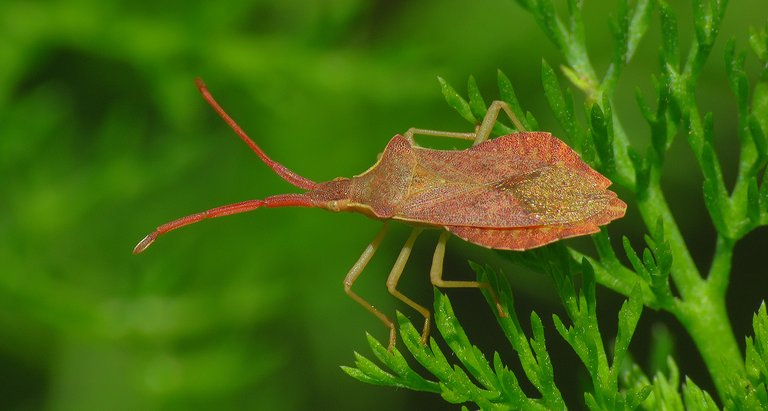
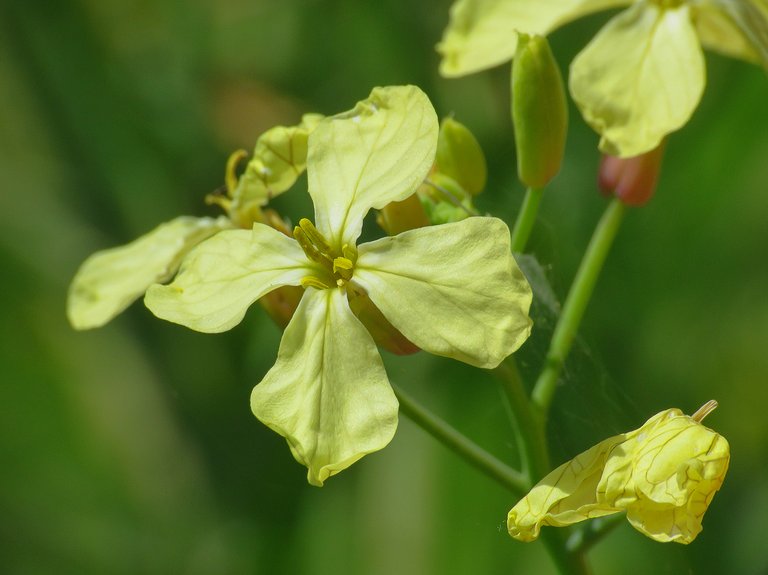
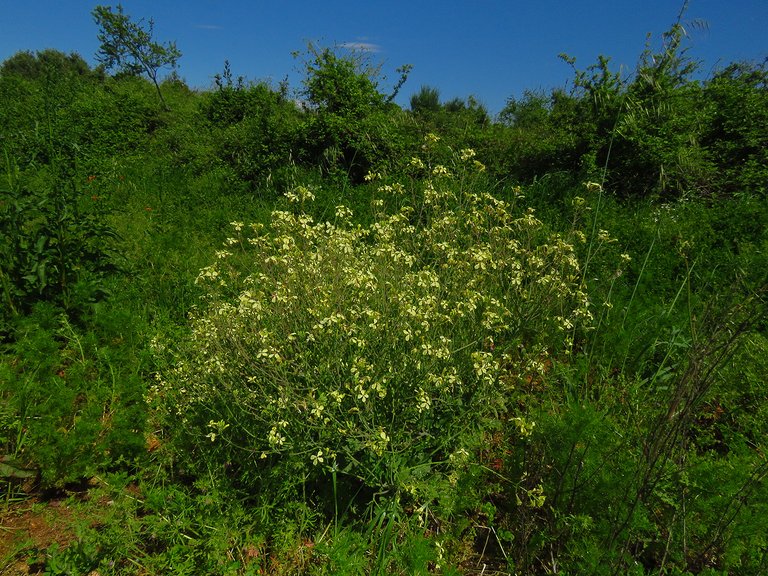
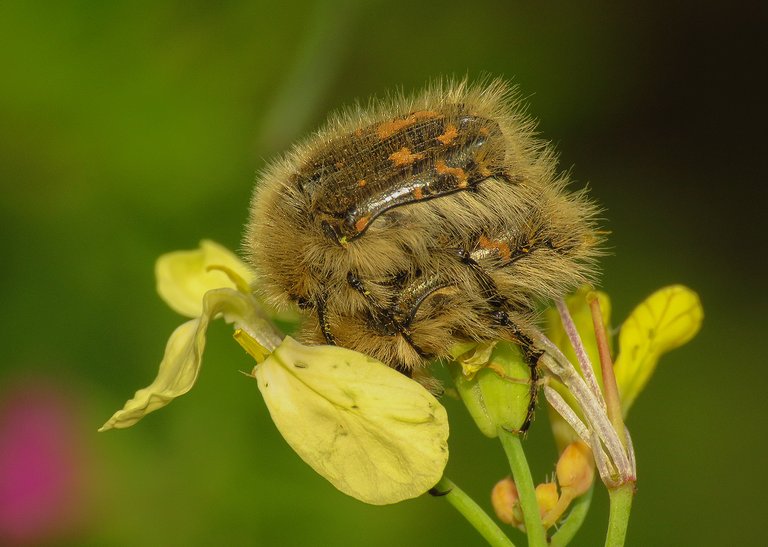
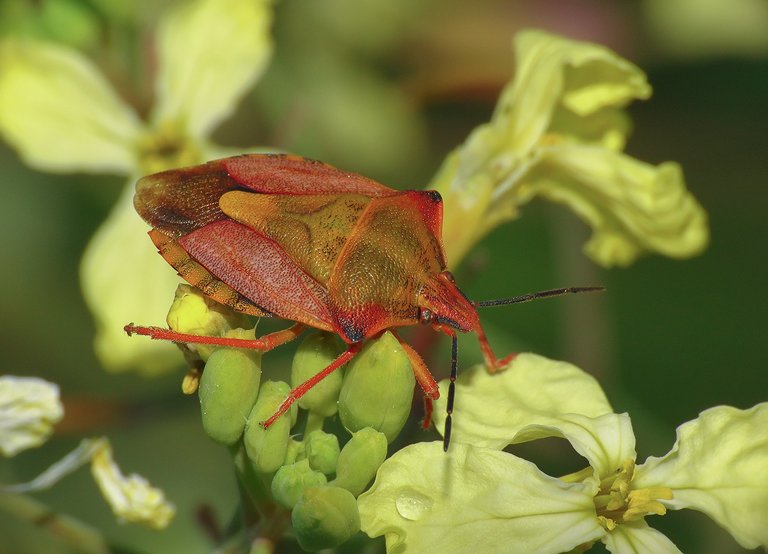
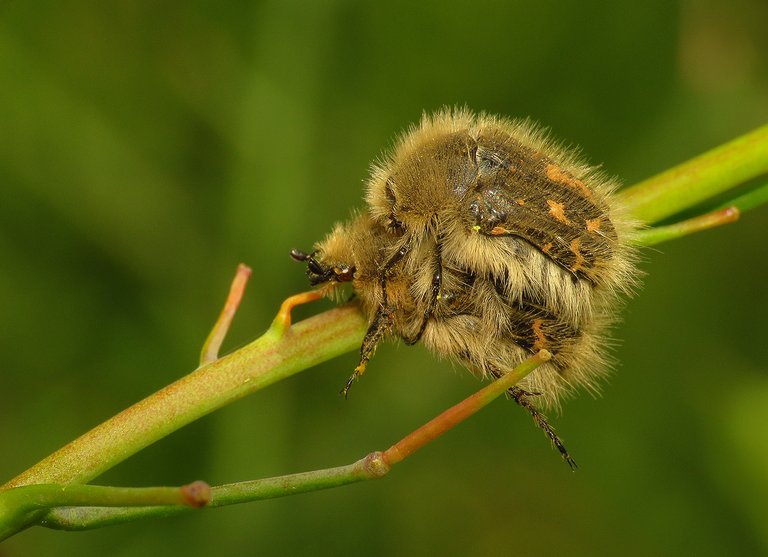
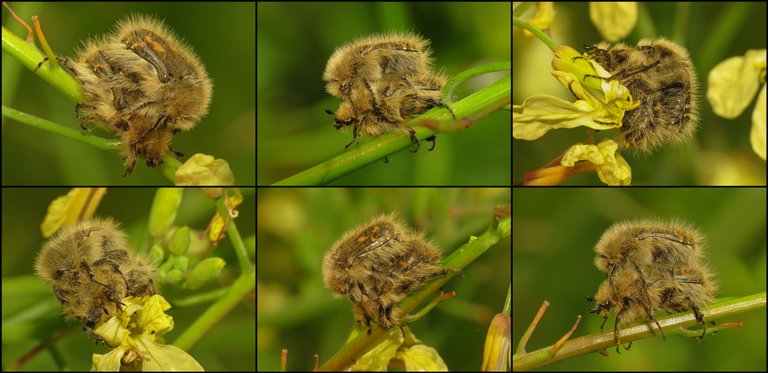
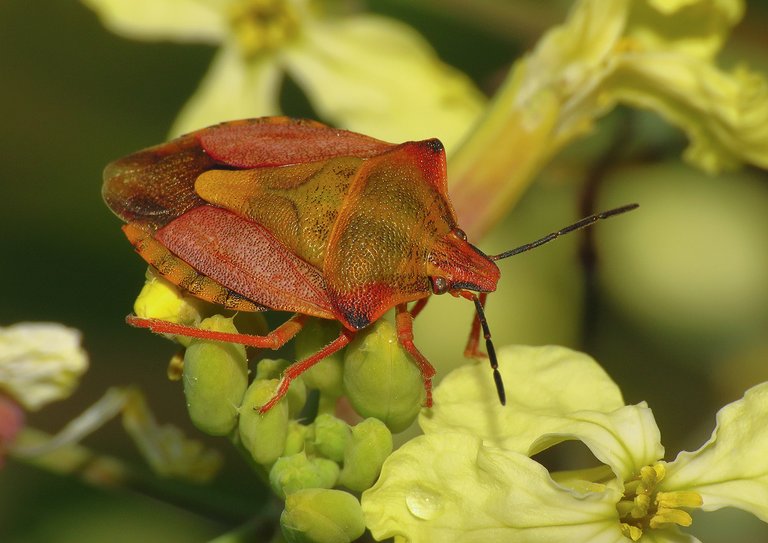
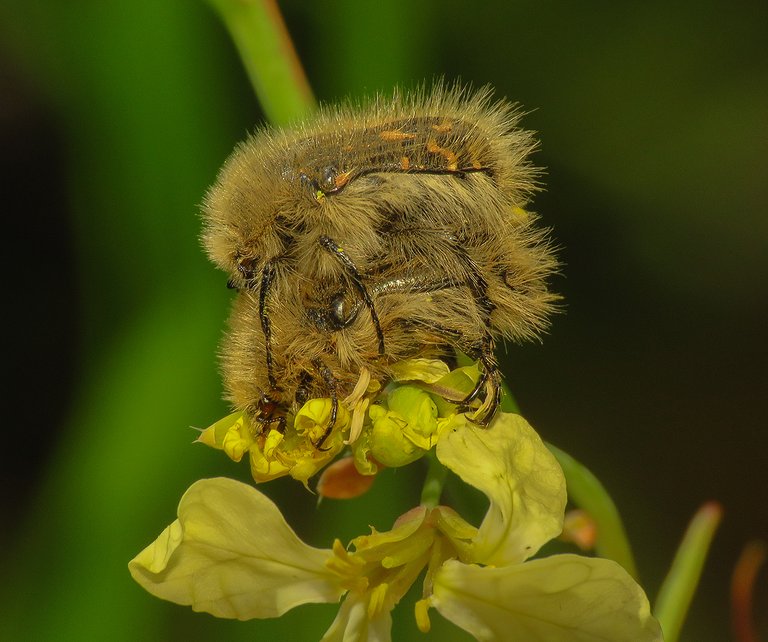

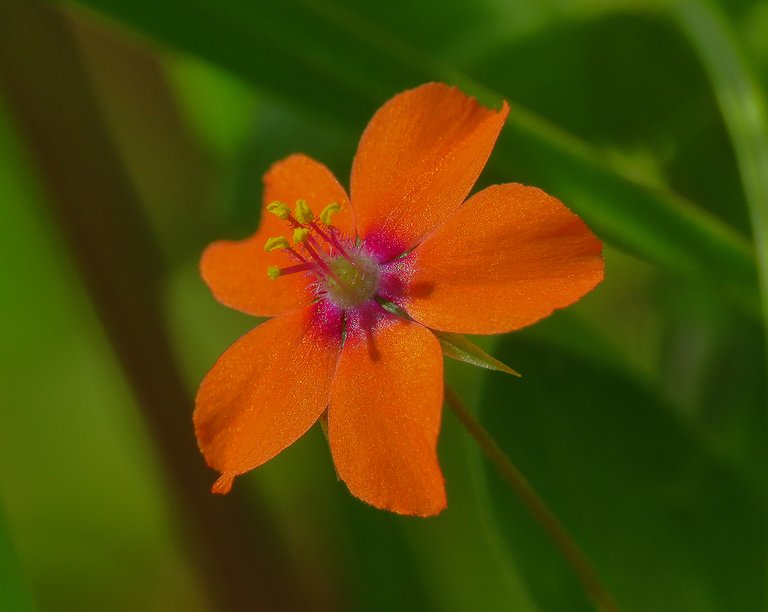
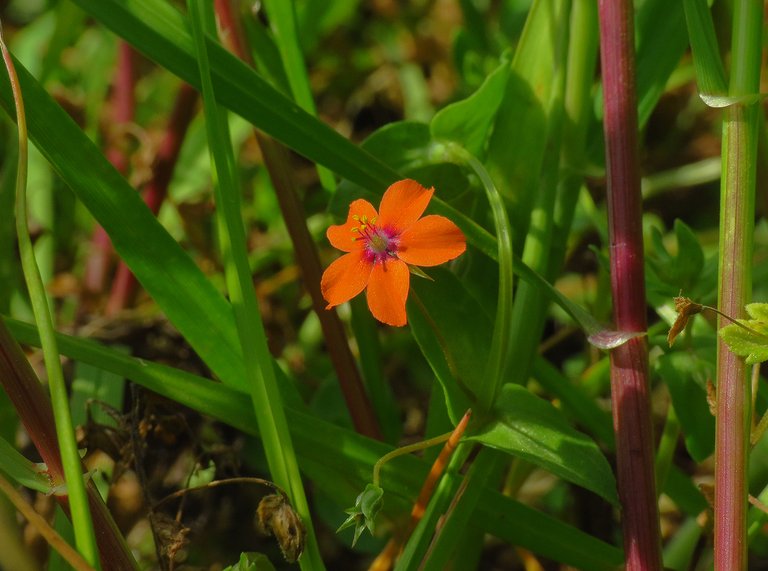
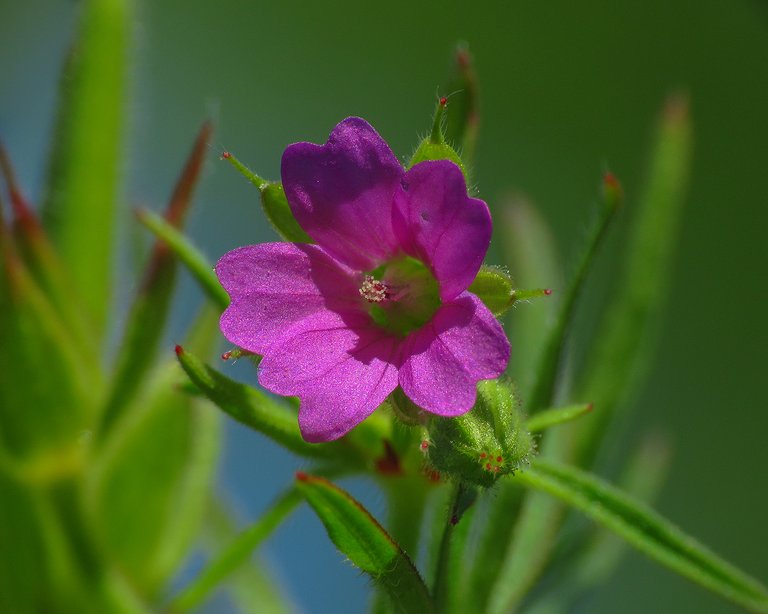
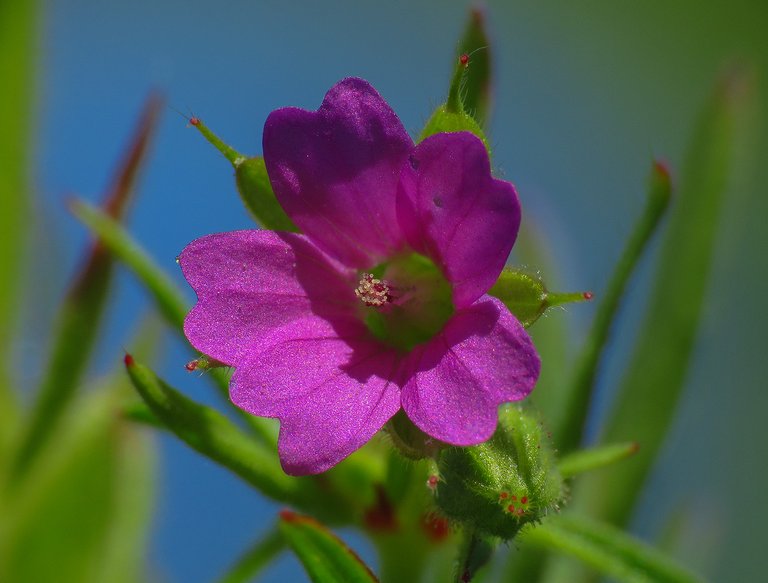
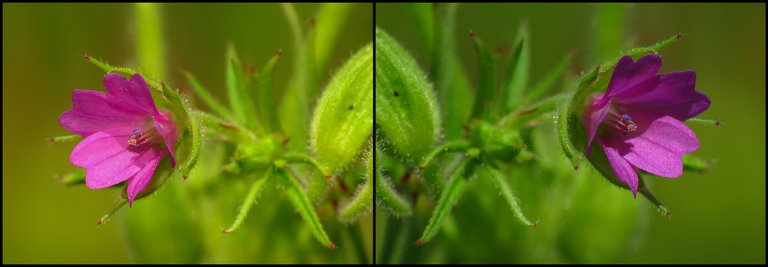
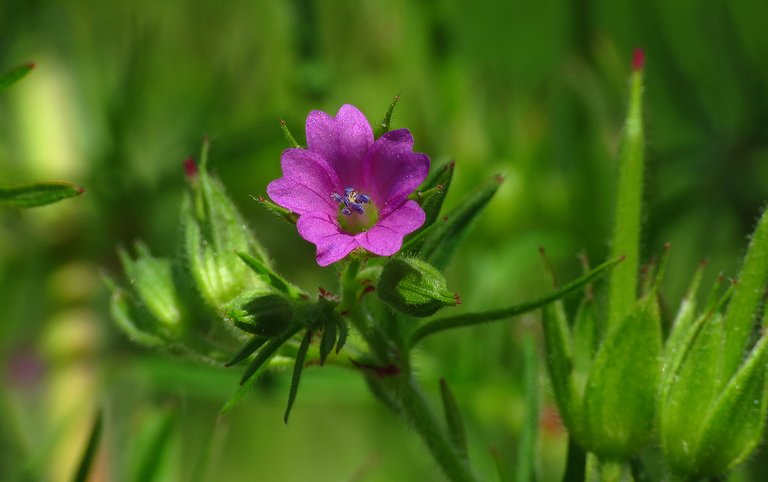
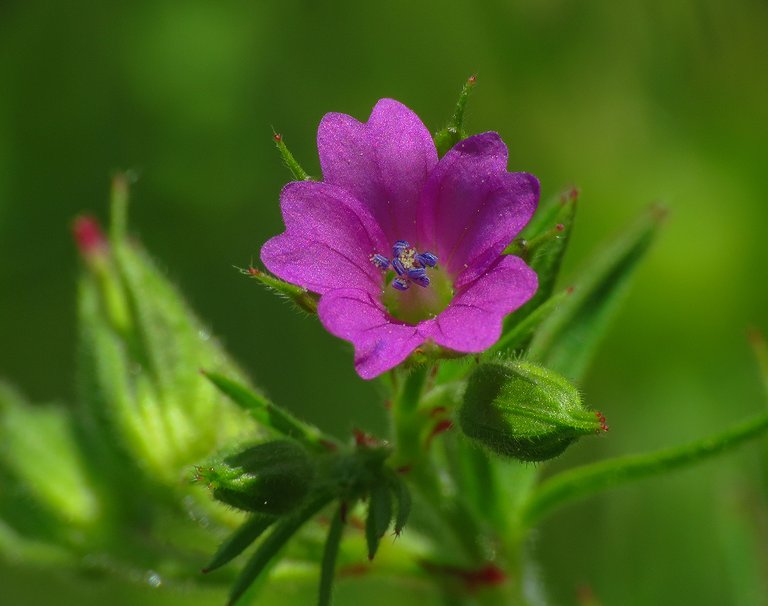
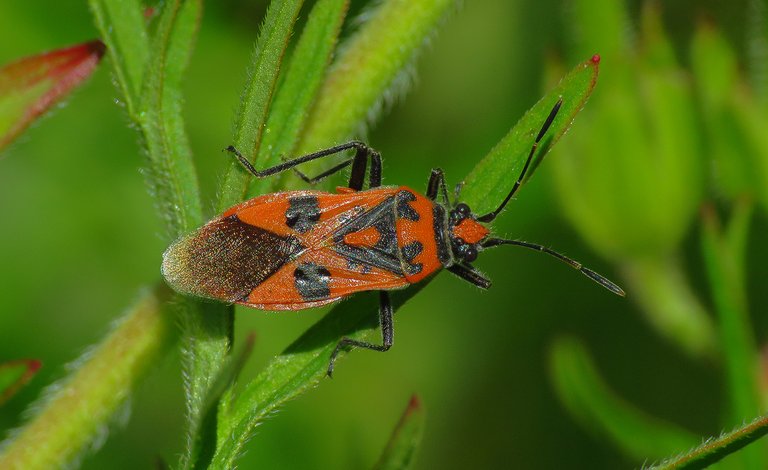
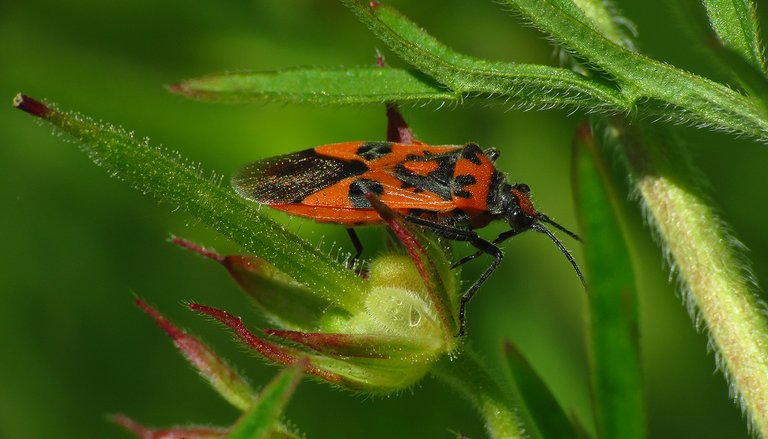
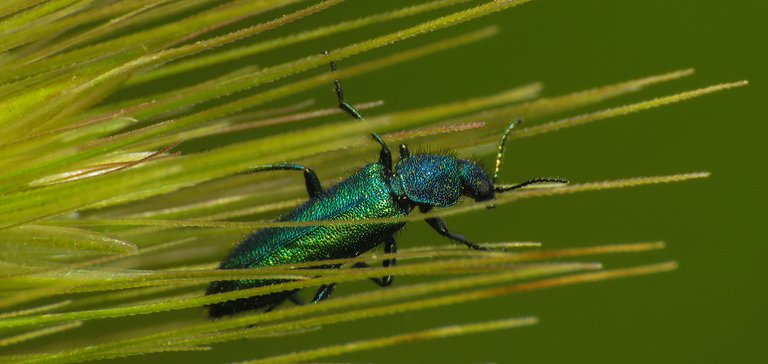

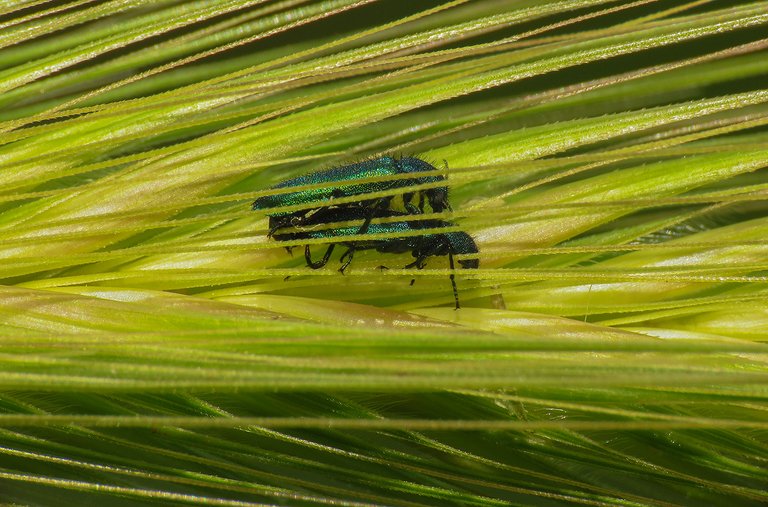
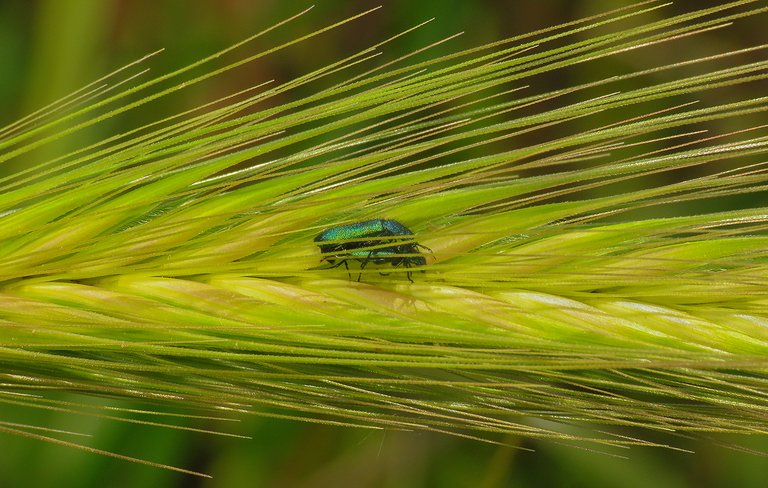
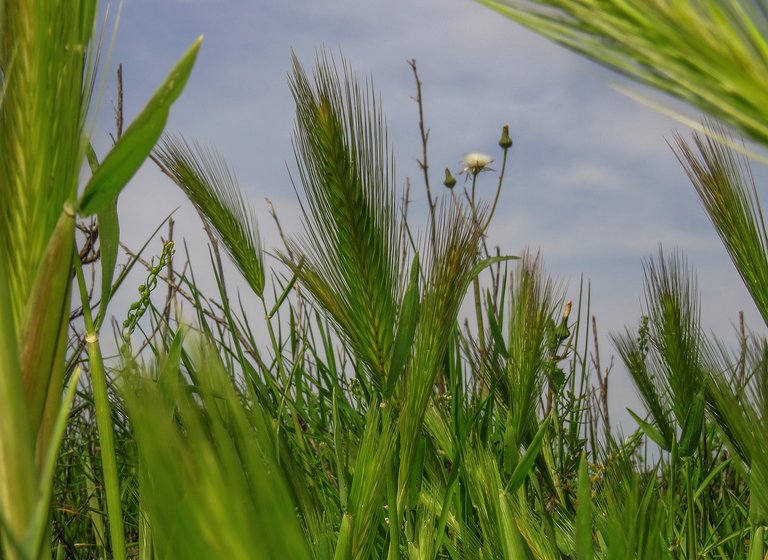

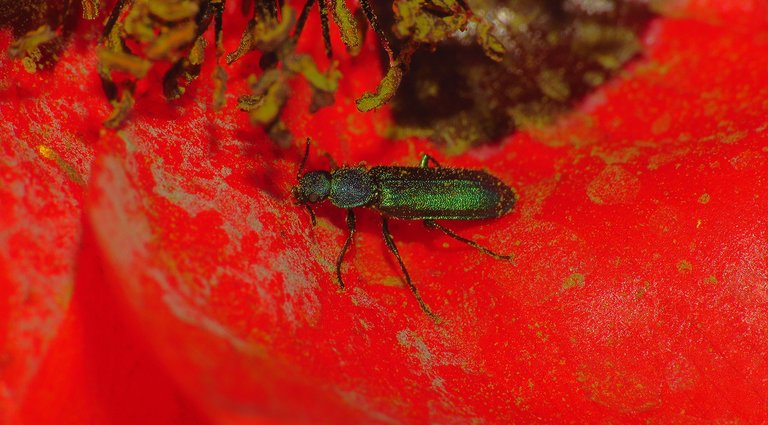

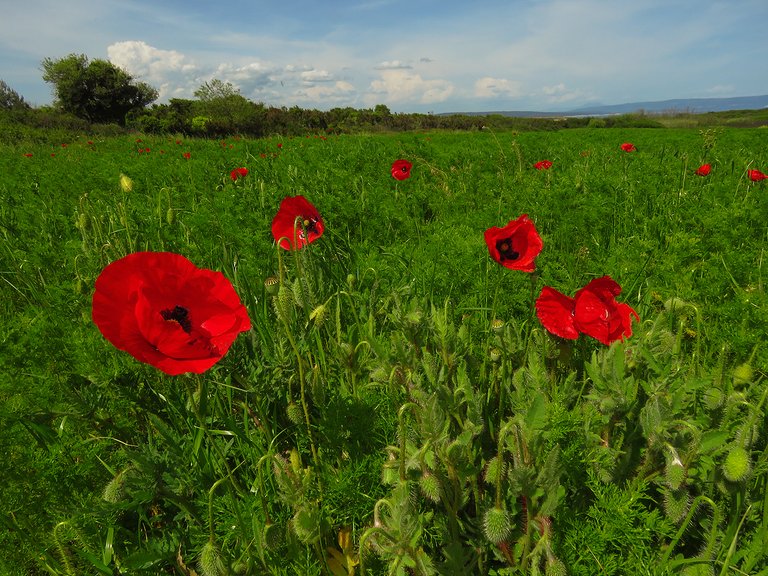
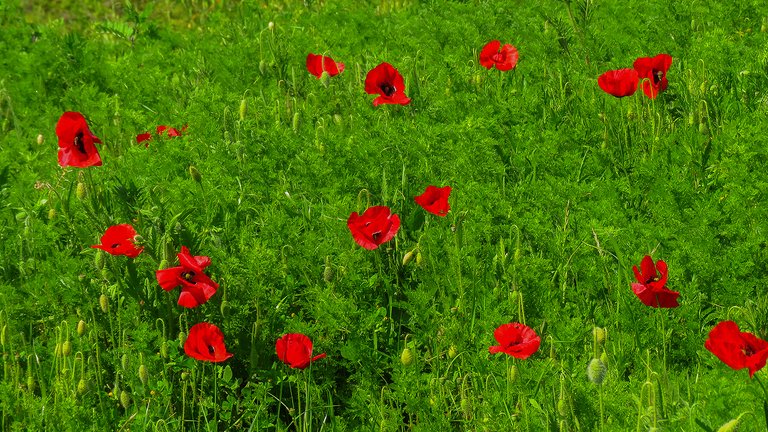
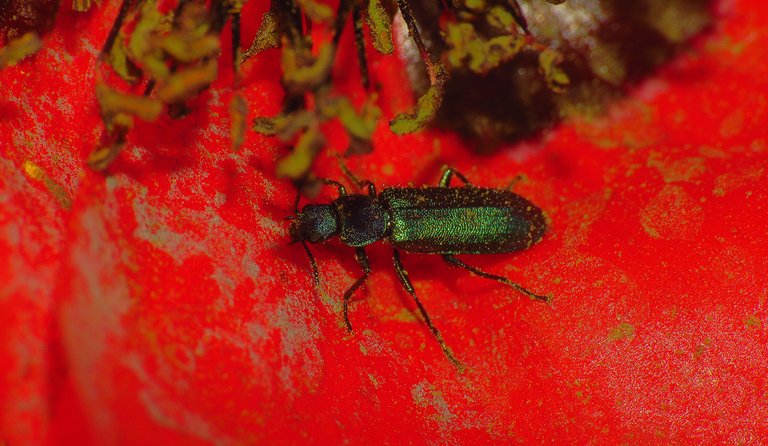

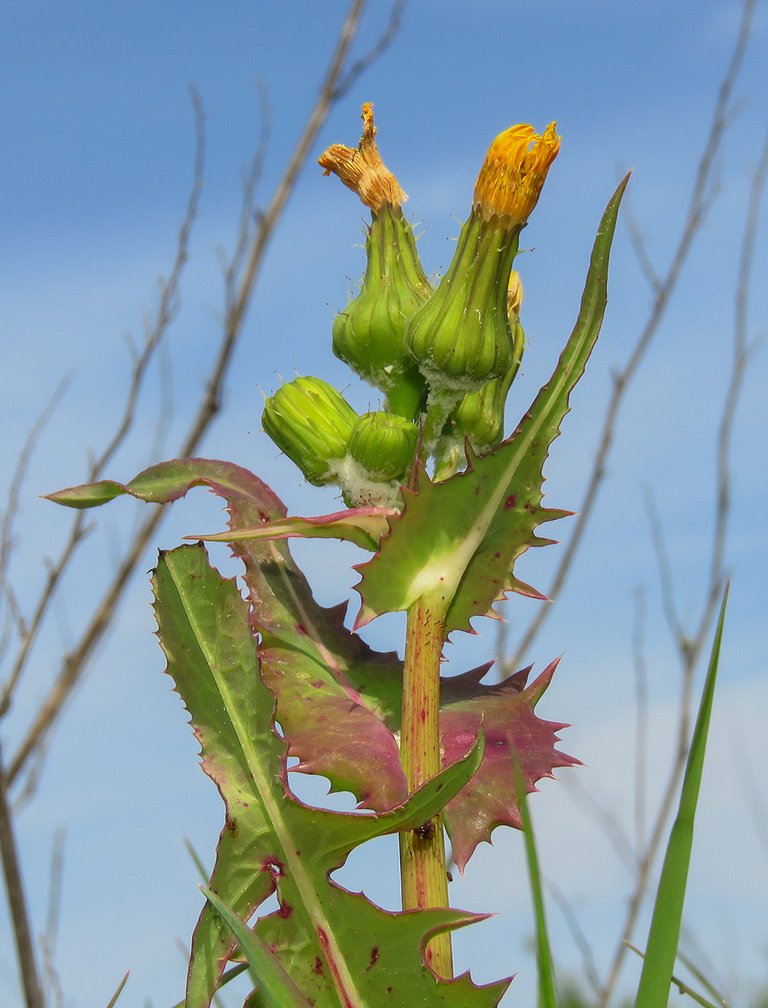

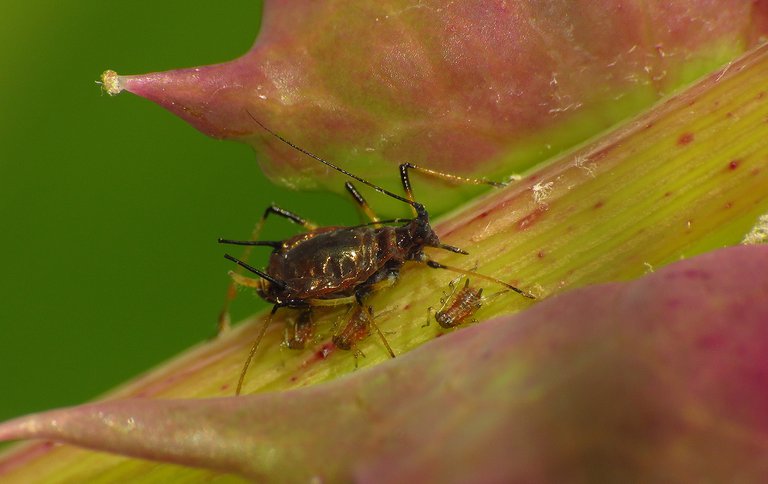
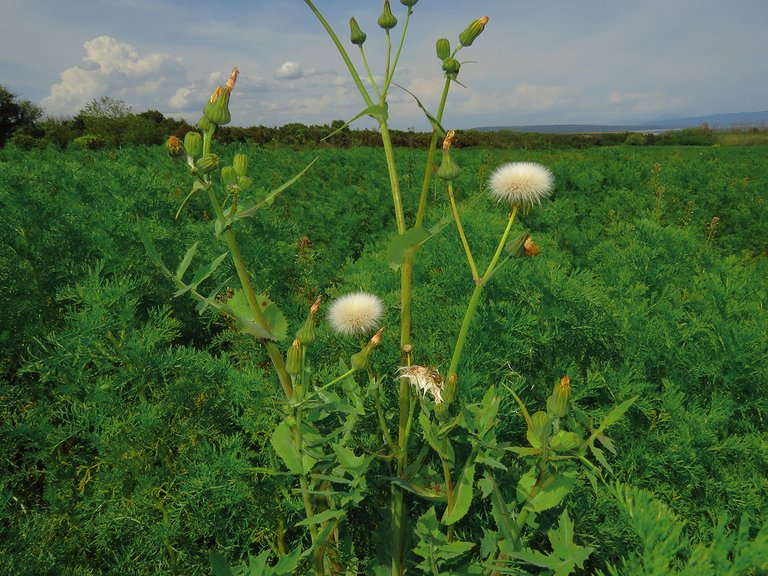
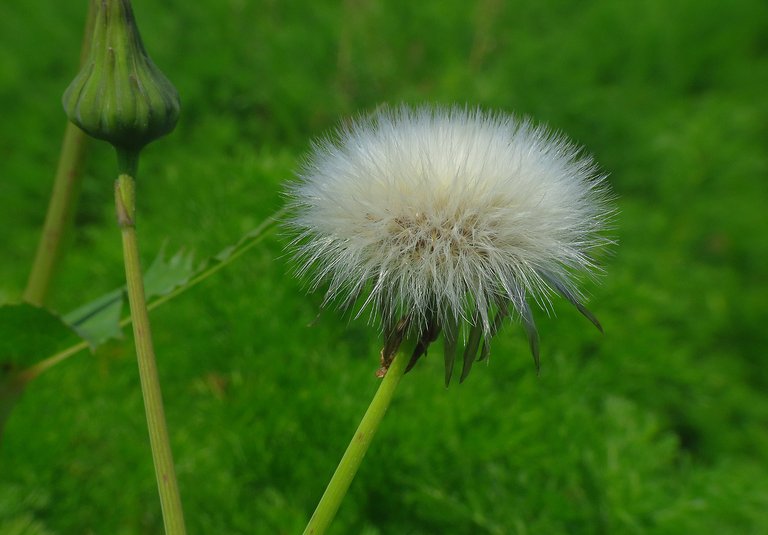
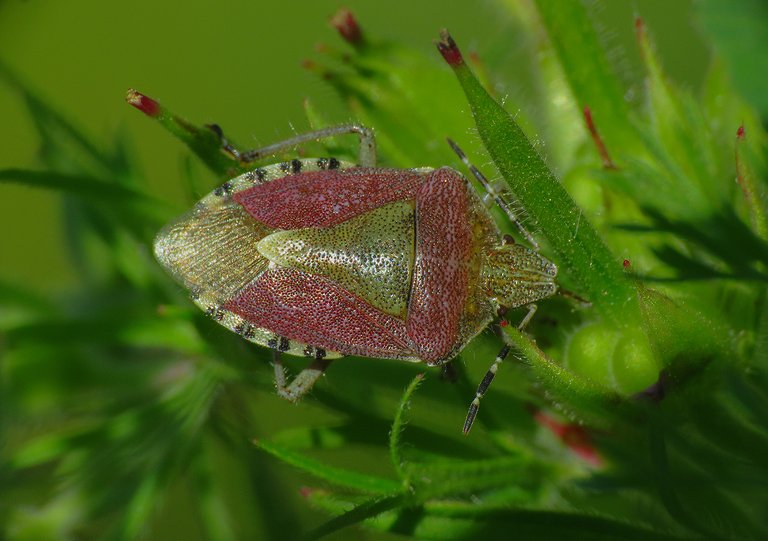
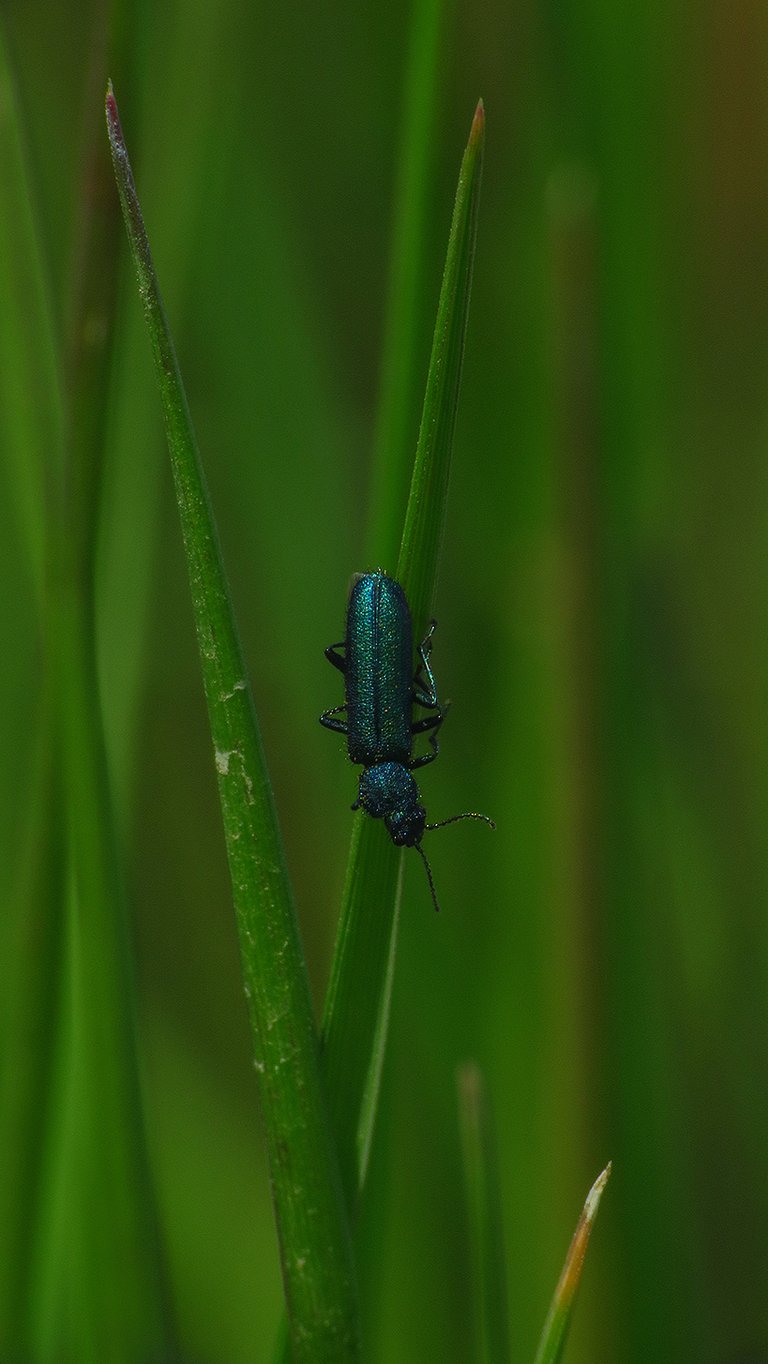
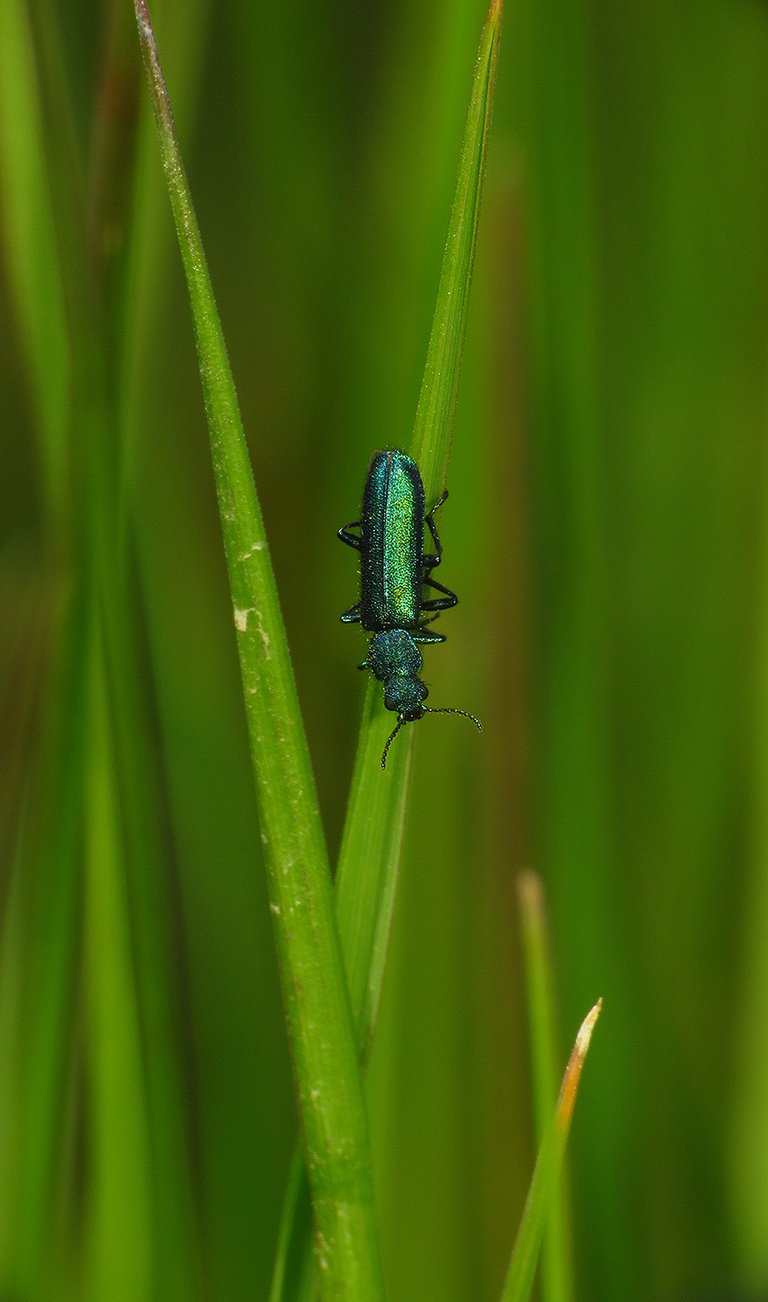
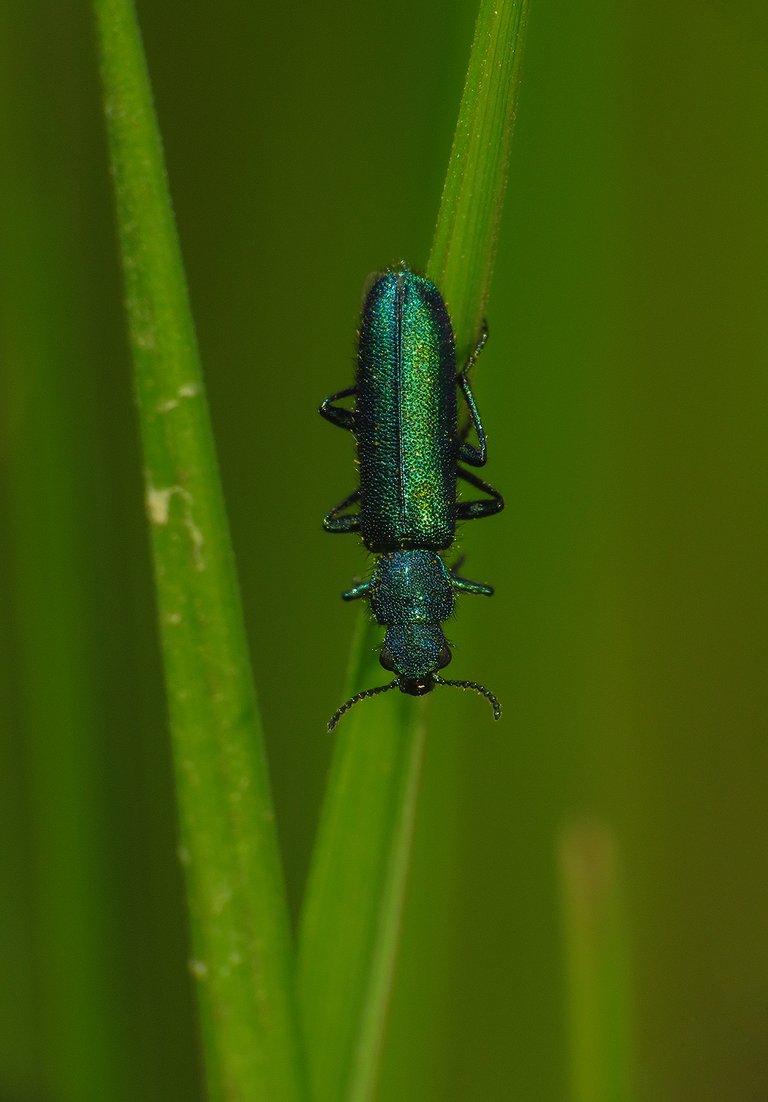
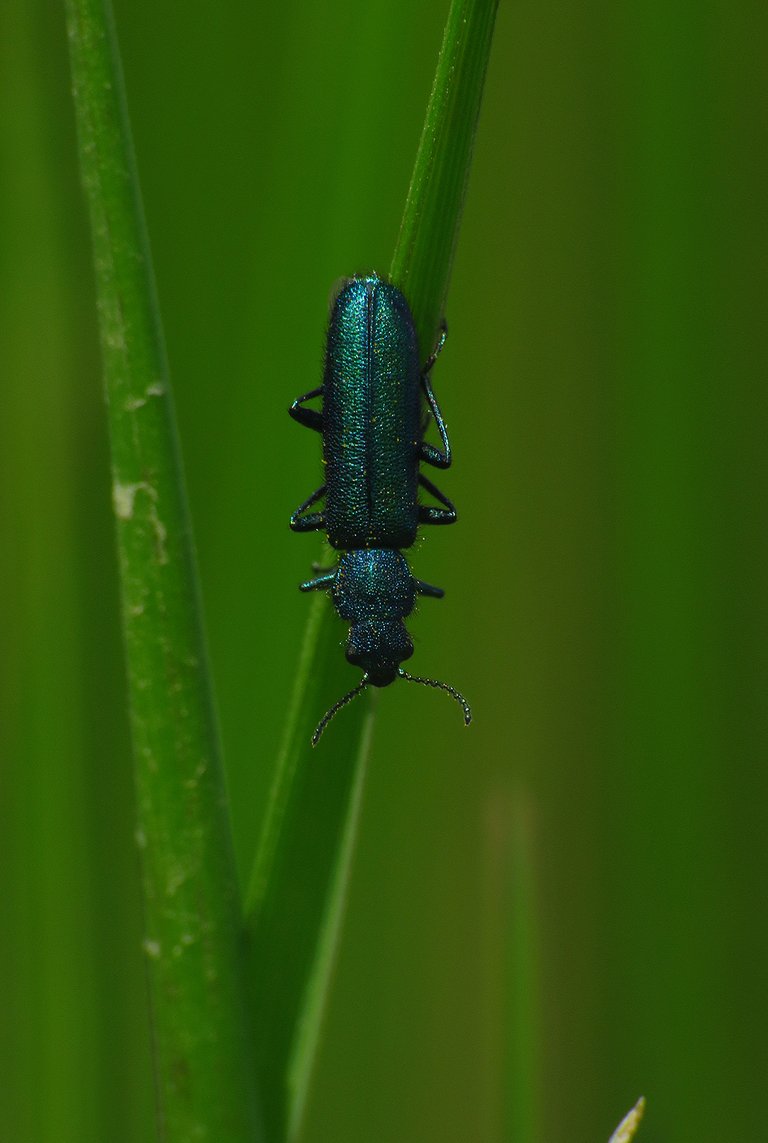
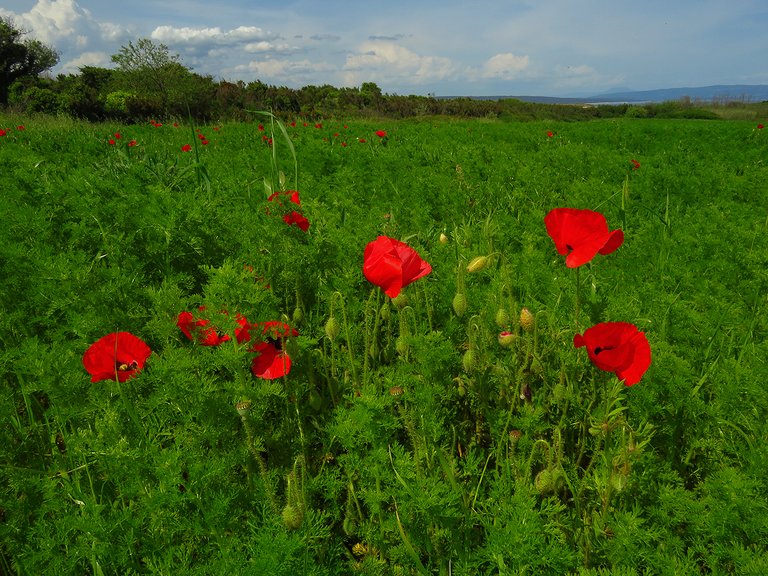
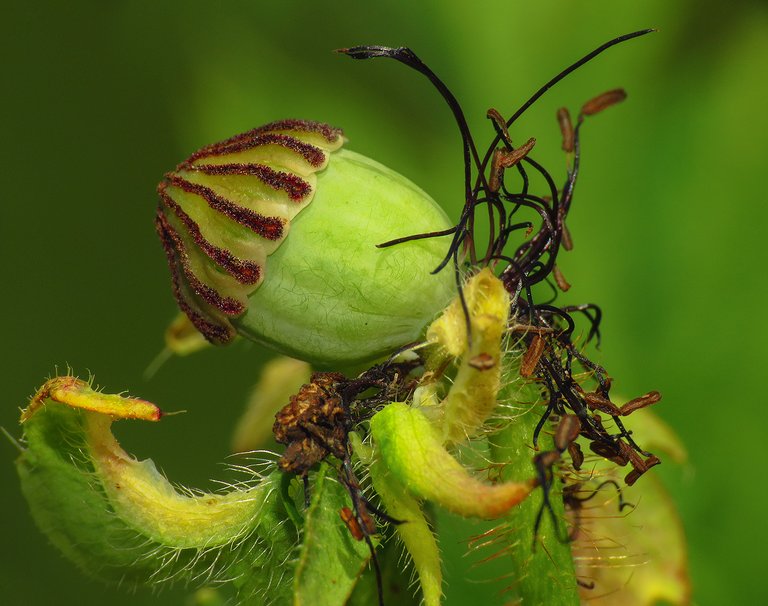
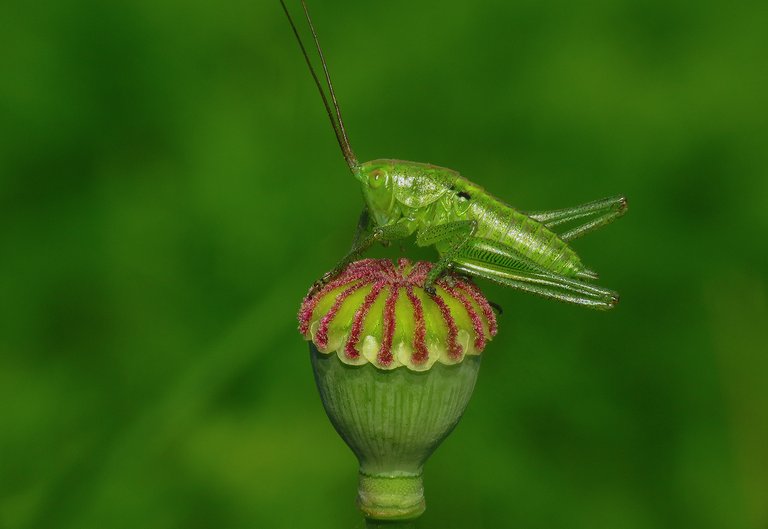

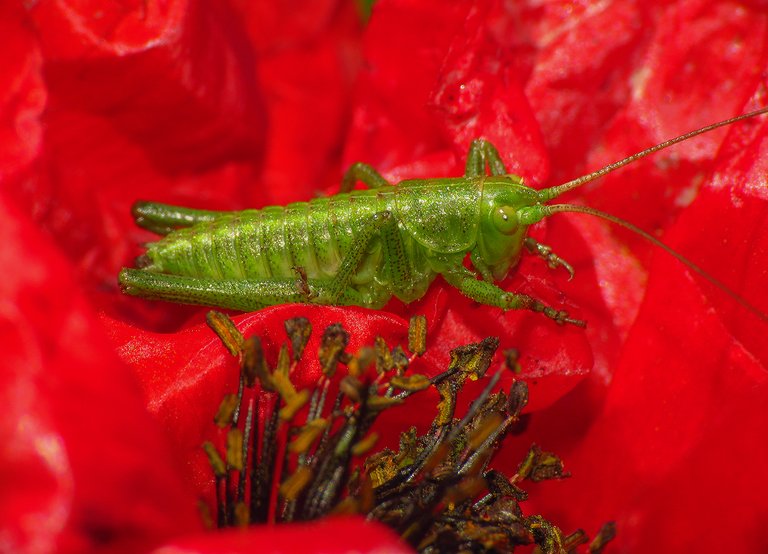
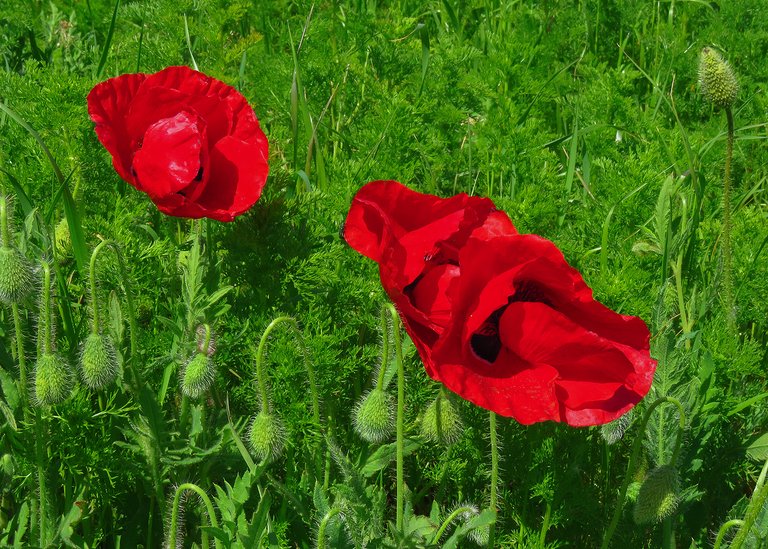
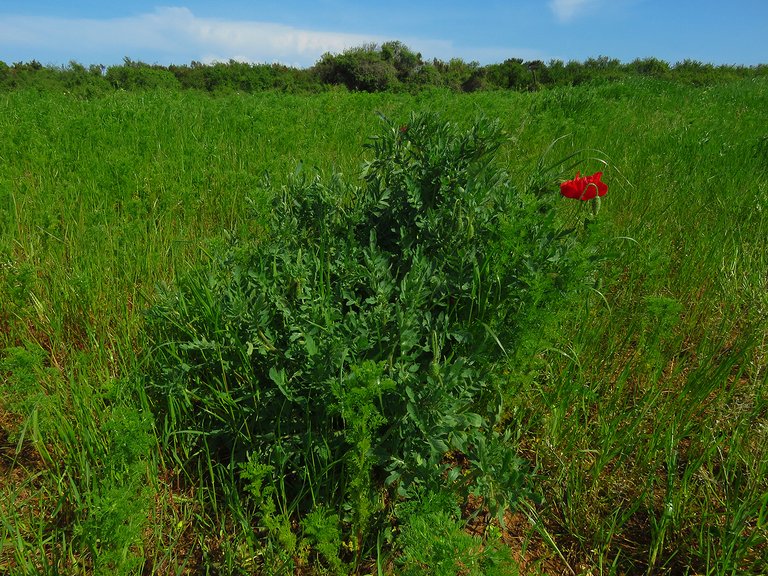
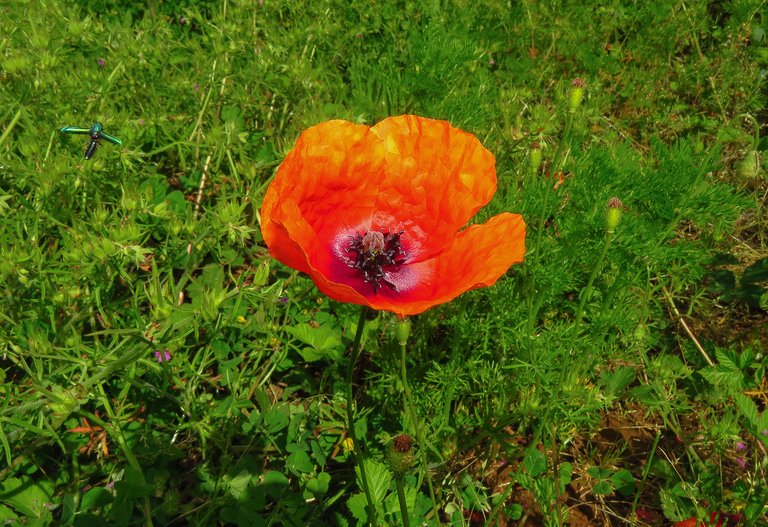
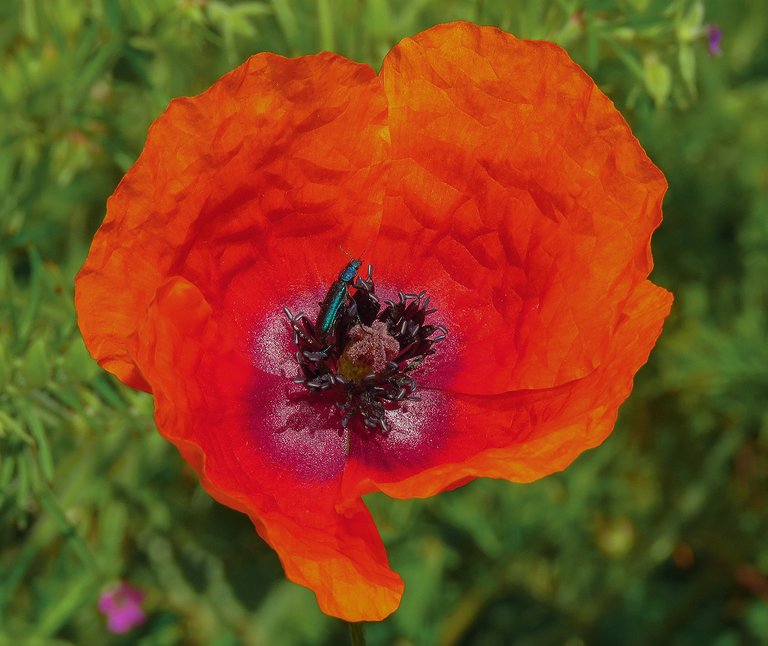
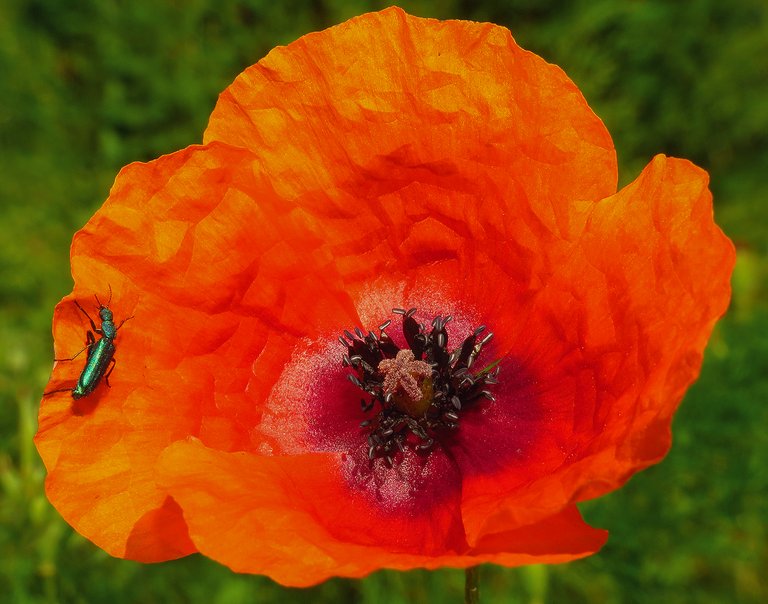

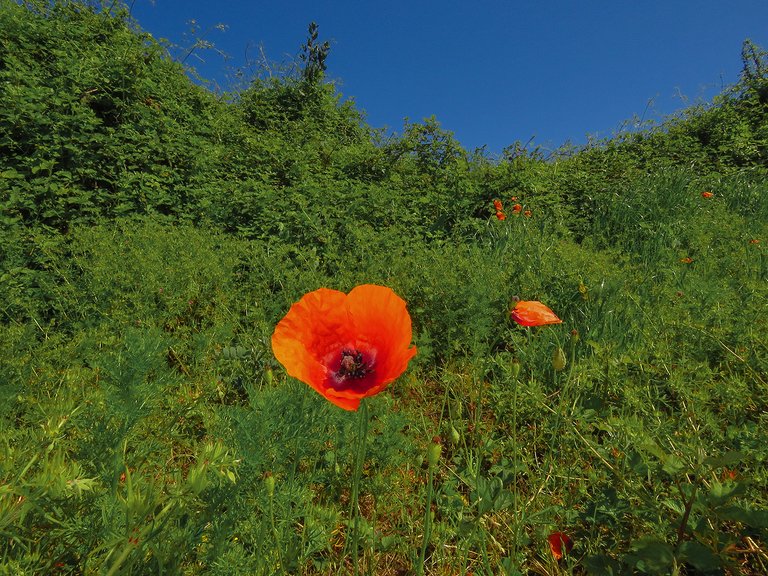
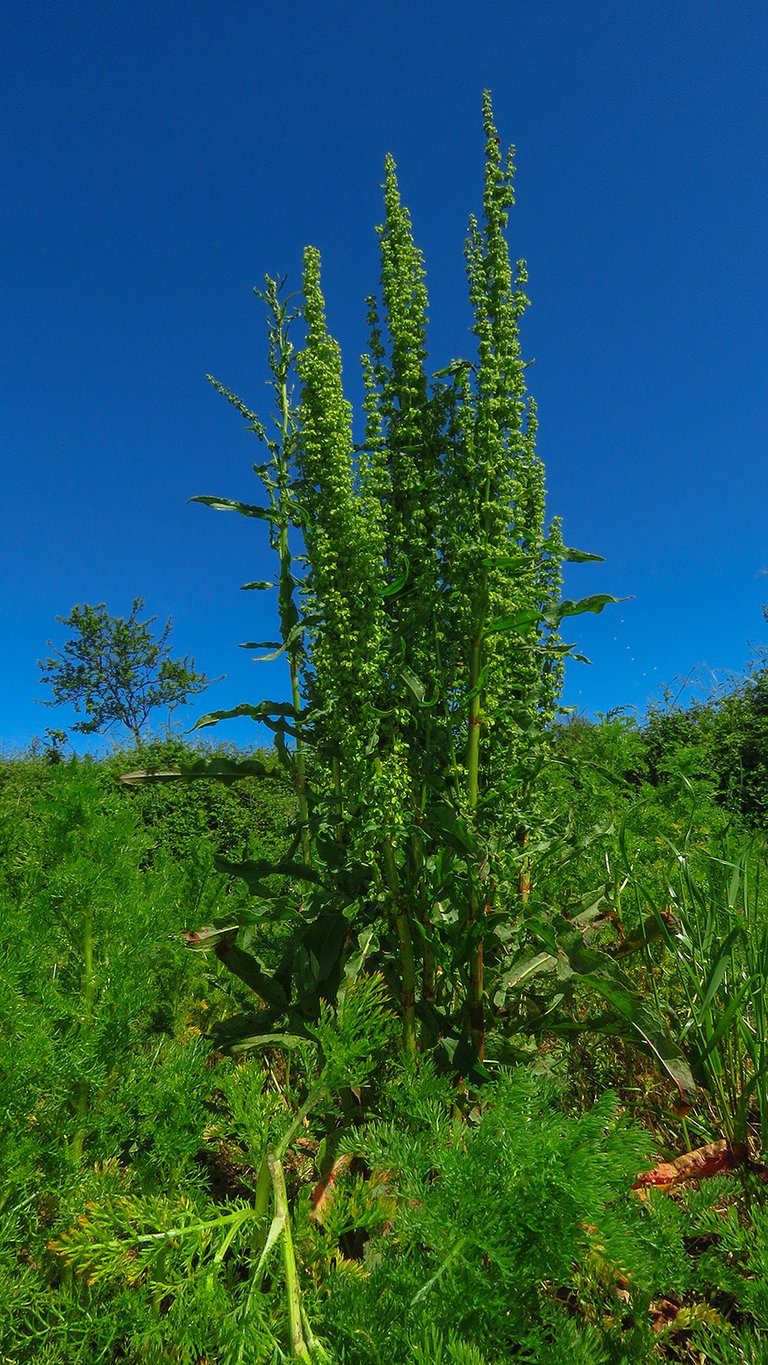

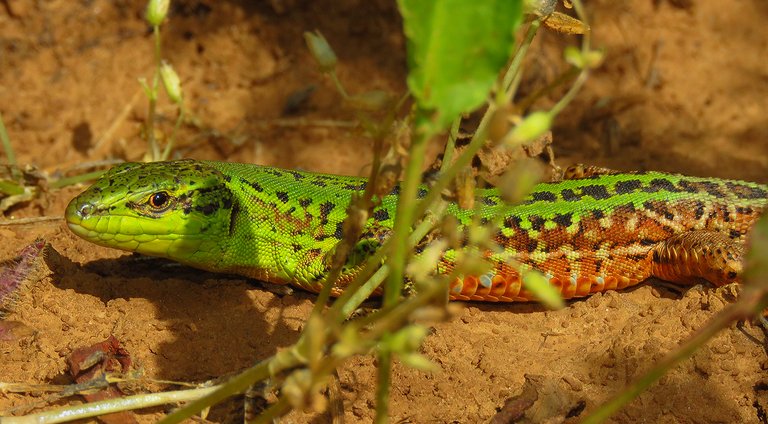
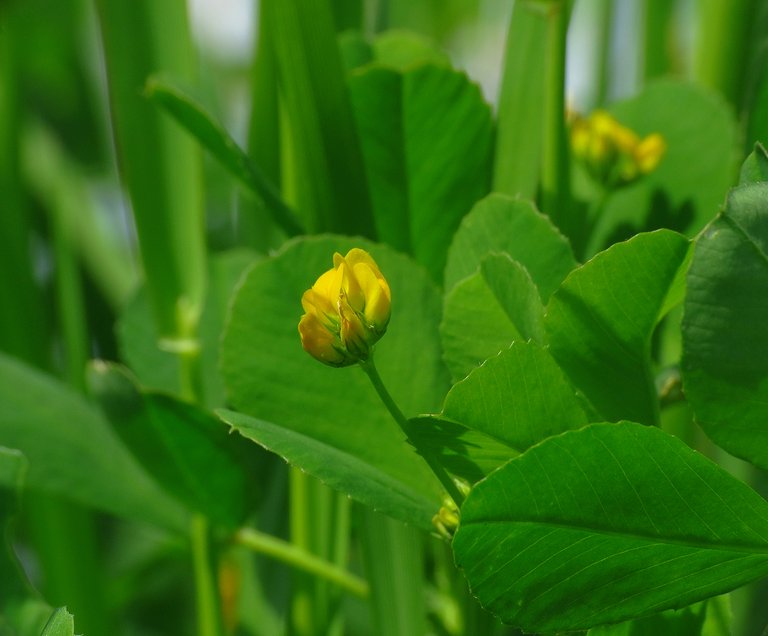

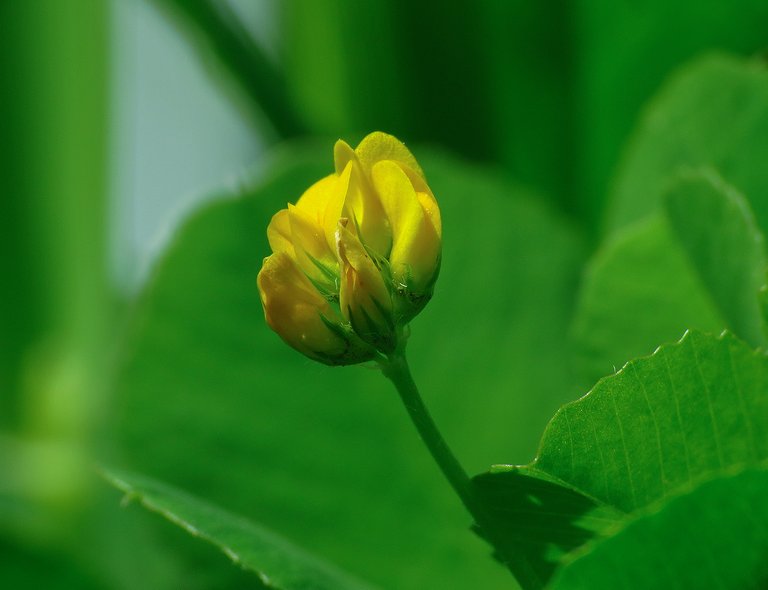
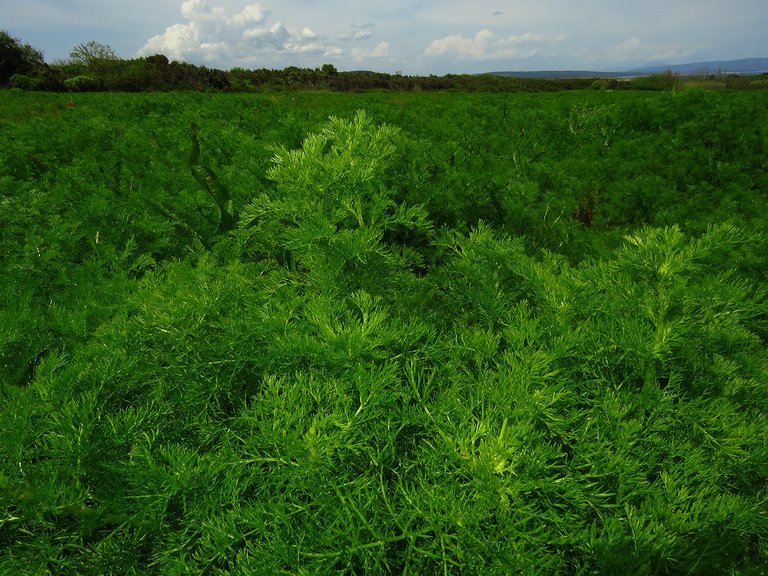

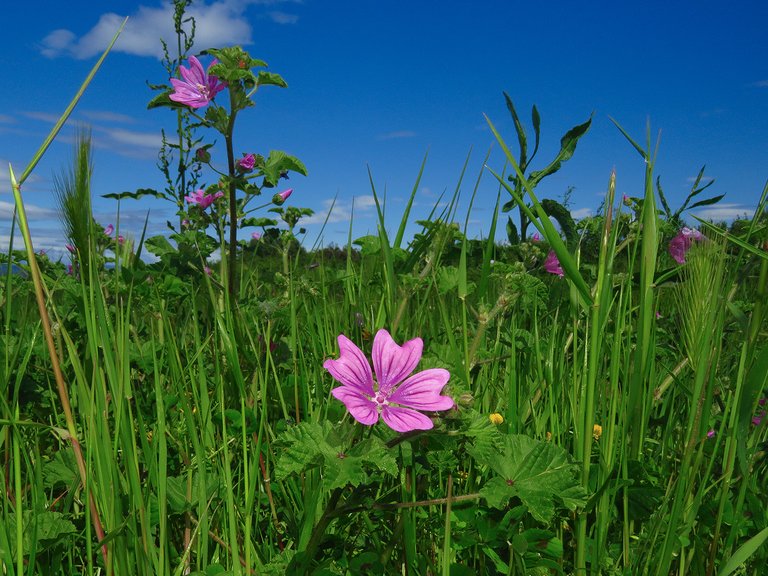
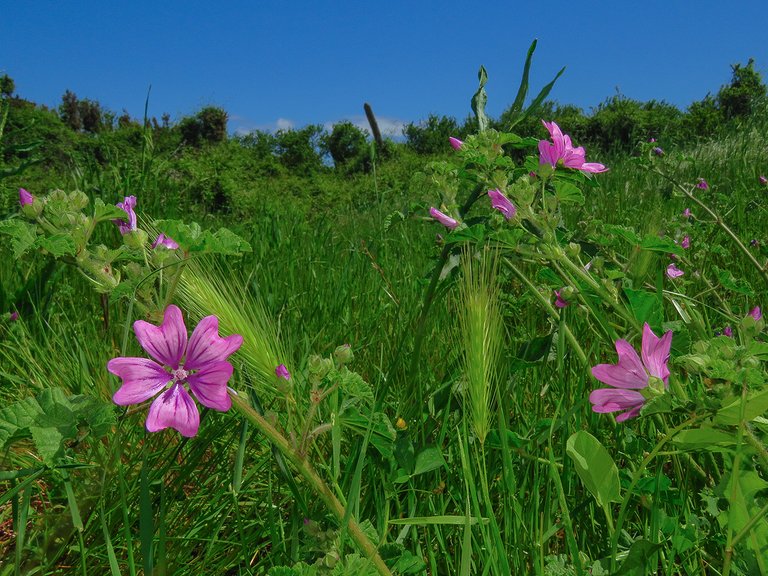

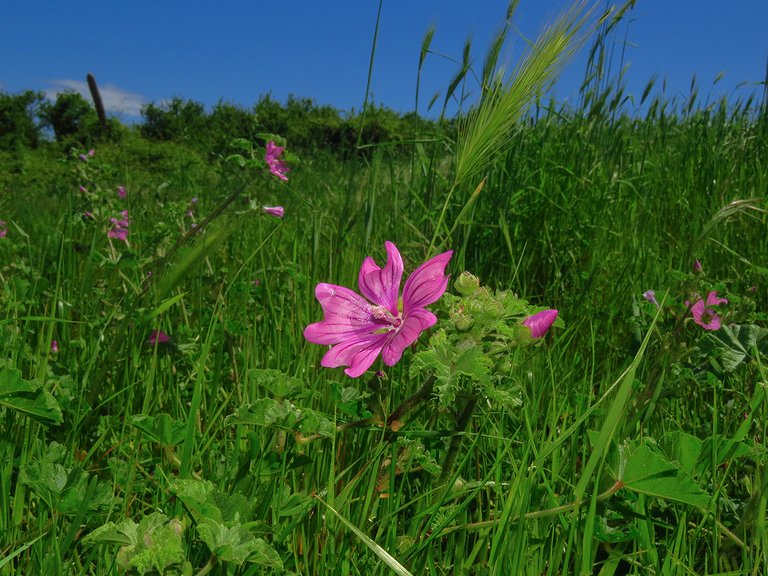
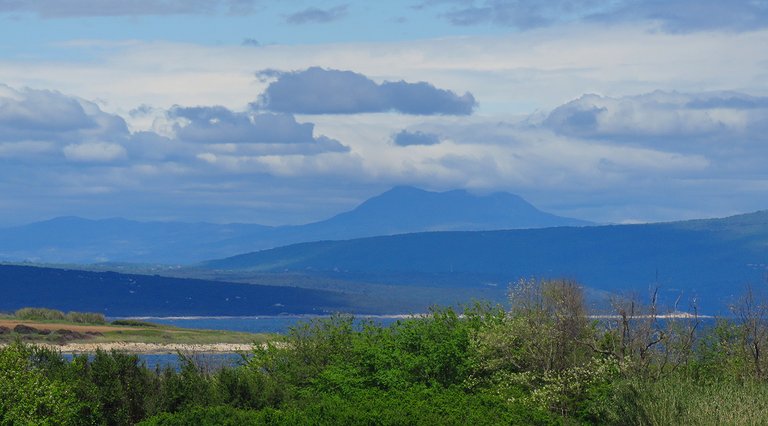
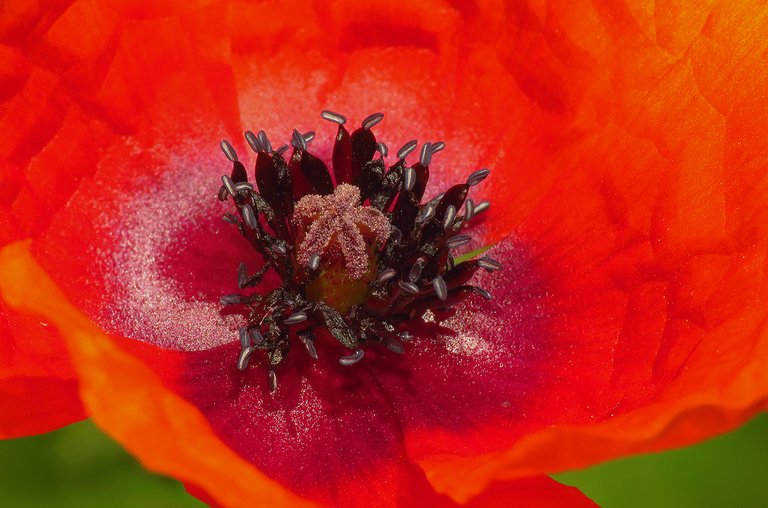
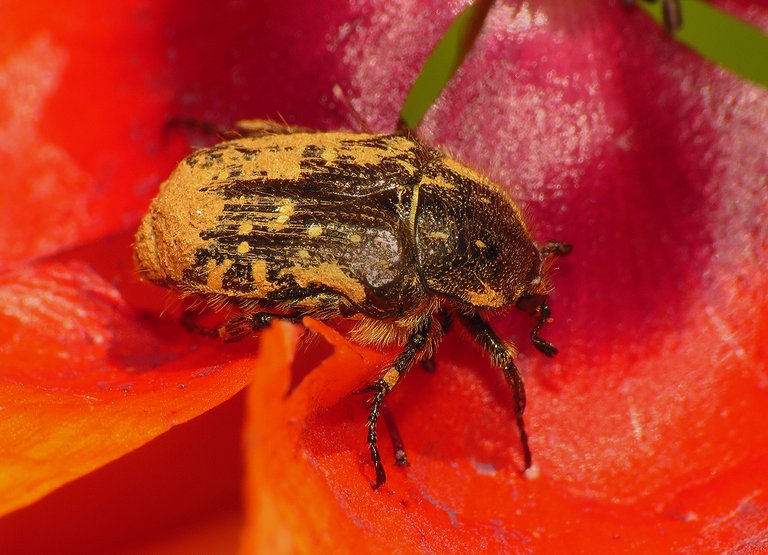
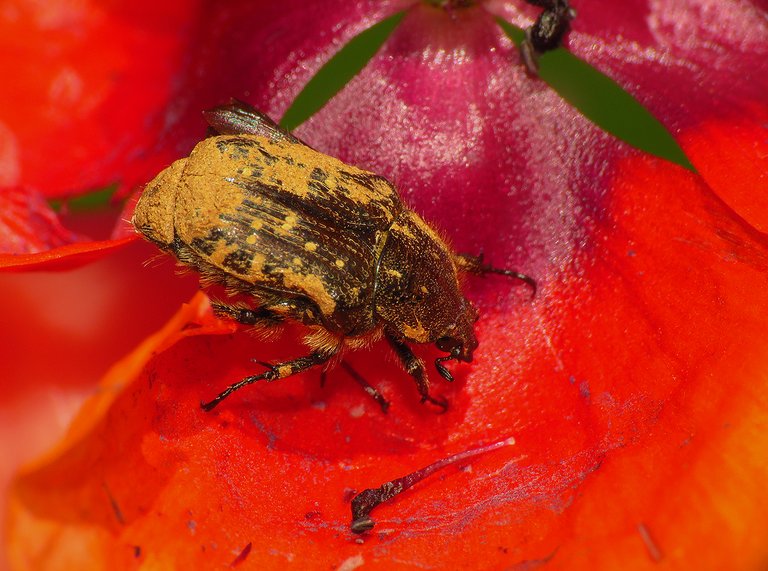
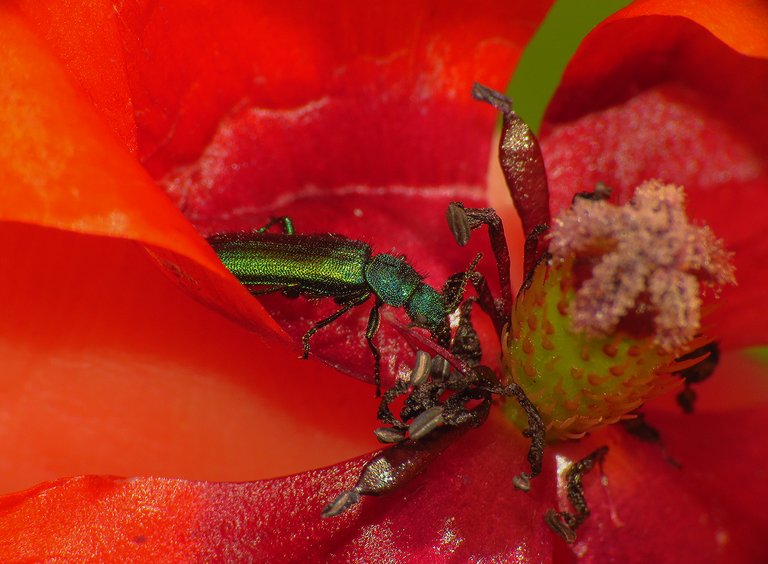
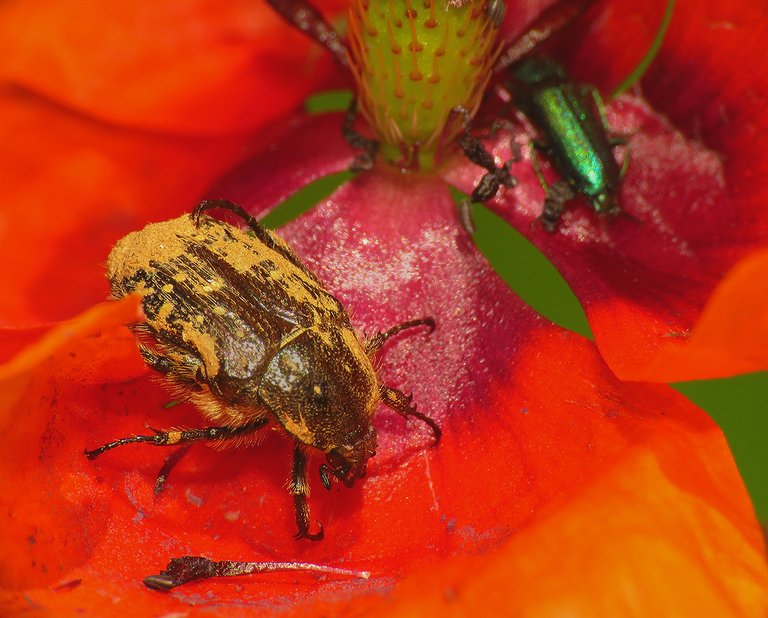
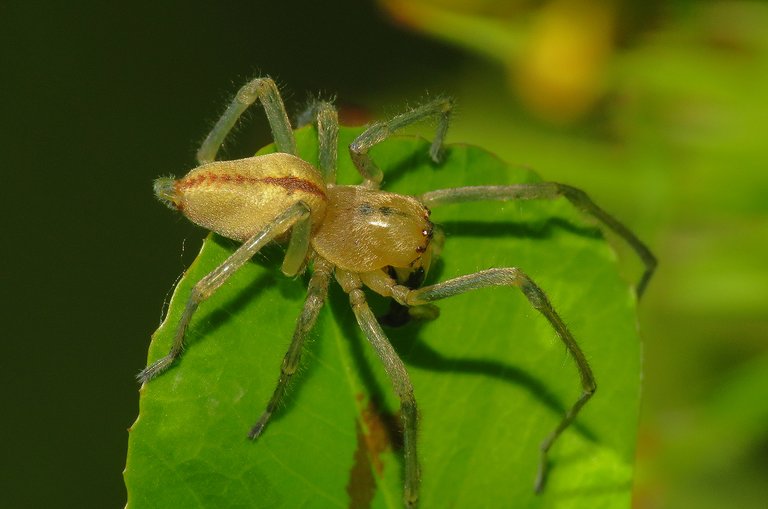

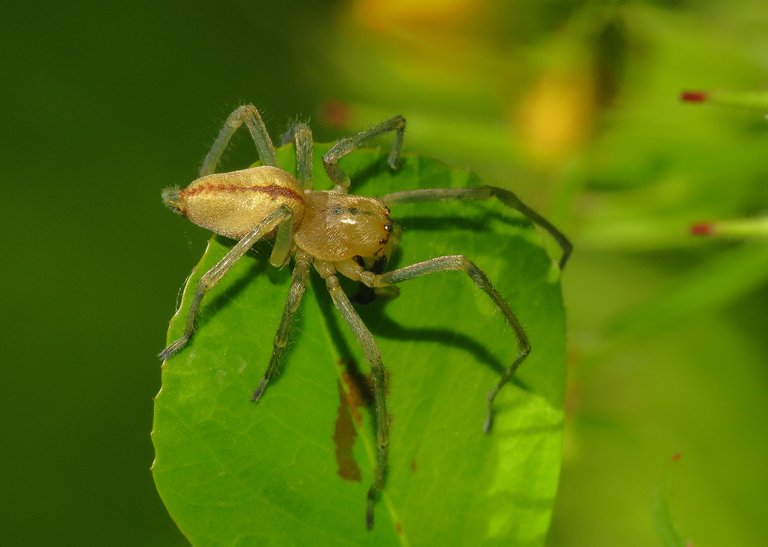


You received an upvote ecency
Love the colorful flora und hairy insects.
!beer
🙂 Cheers. 🥂
There are a lot of insect and flower are looking so amazing. I really like flower and those colours. Nice photos
Thank you. 🙂
There are so many beautiful flowers and their colors and some beautiful insects and your writing is all wonderful.
Thank you. 🙂
Congratulations @borjan! You have completed the following achievement on the Hive blockchain And have been rewarded with New badge(s)
Your next target is to reach 470000 upvotes.
You can view your badges on your board and compare yourself to others in the Ranking
If you no longer want to receive notifications, reply to this comment with the word
STOPCheck out our last posts:
Your photos are truly stunning, those vibrant flowers and the lively insects you captured tell such a rich, colorful story of spring. You have a real talent for revealing the hidden wonders in nature, and each shot feels like a moment of discovery. 😍
Thanks. 🙂 Glad you enjoyed the post. There is an incredible biodiversity among insects and other small invertebrates. Plants come in so many interesting shapes and colors. There is always something interesting to explore and photograph. I hope I will be able to visit some tropical parts of the world one day, places where all that biodiversity and colorfulness is like hundreds of times greater.
It’s awesome how you find so much beauty in the little things in nature! I’m sure when you explore tropical places, the colors and wildlife will be incredible. 😍
!discovery 30
This post was shared and voted inside the discord by the curators team of discovery-it
Join our Community and follow our Curation Trail
Discovery-it is also a Witness, vote for us here
Delegate to us for passive income. Check our 80% fee-back Program
Hello dear friend @borjan, how are you?
How great that in this place you have the opportunity to take photos at various times of the day; these afternoon shots are colorful and beautiful.
The wildlife and the beautiful flowers you found are impressive. The Geranium dissectum flowers are beautiful and very delicate.
Beautiful shots, dear friend.
Have a great day.
🙂

Wow these are really beautiful flowers worth to be admired I must truly confess
Thanks 🙂 Glad you like the post.
@tipu curate
Upvoted 👌 (Mana: 39/59) Liquid rewards.
A post with macro photographs that could be called "poetic"... A big round of applause for you, my friend!
!PIZZA
📷💯👍
Thanks 🙂 🙏
$PIZZA slices delivered:
@jlinaresp(5/15) tipped @borjan
Come get MOONed!
Amazing macros as usual coming from you derar @borjan friend!... Thanks for sharing!
The hairy beetles look so cute
I actually love to see a bunch of it…
Yes, some hairy insects are surprisingly cute when seen up close in full detail.
The pictures are so lovely
Do you have a garden in your house or you take pictures of random gardens?
I have a yard and garden, but don't photograph there often. The forests, shrublands, and meadows are more interesting. I take the photographs for these posts I'm publishing these days in meadows and fields near the sea, open places where anybody can go and explore.
https://x.com/lee19389/status/1919894321513333125
#hive #posh
So much cool stuff! The lizard was really cool, nice and colorful. There was lots of gratuitous insect sex, those hairy beetles were interesting, I've never seen anything like them here in the Americas. So many beautifully colored beetles and the flowers were amazing. Excellent work, that is awesome!
Is that mountain off in the horizon an old volcano? It kind of looks like one is why I ask. I'm a volcano fan, especially old extinct ones that happen to have diamonds in them!
True, it looks a bit like a volcano from a distance 🙂 but is just an ordinary mountain. No signs of a crater on its top. Maybe some rich hiker-nature lover lost a diamond there and nobody has found it yet, so there is a possibility to get a diamond from the mountain that looks like a volcano but never was one.
Glad you like the plants and animals presented in the post. 🙂
The photos you show are really very good and cool I really like to see what you show
You put a lot of effort into making such a beautiful and fascinating post, I enjoyed looking through it and zoomed in on some of the photos to take a closer look at your wonderful macro photos.
🙂
Your fotos came out really lovely. I like the arrangements and appreciate the birds of information about the plants and insects... With links below.
Hello you're discovering different colors of flower it's so wonderful.
🙂
